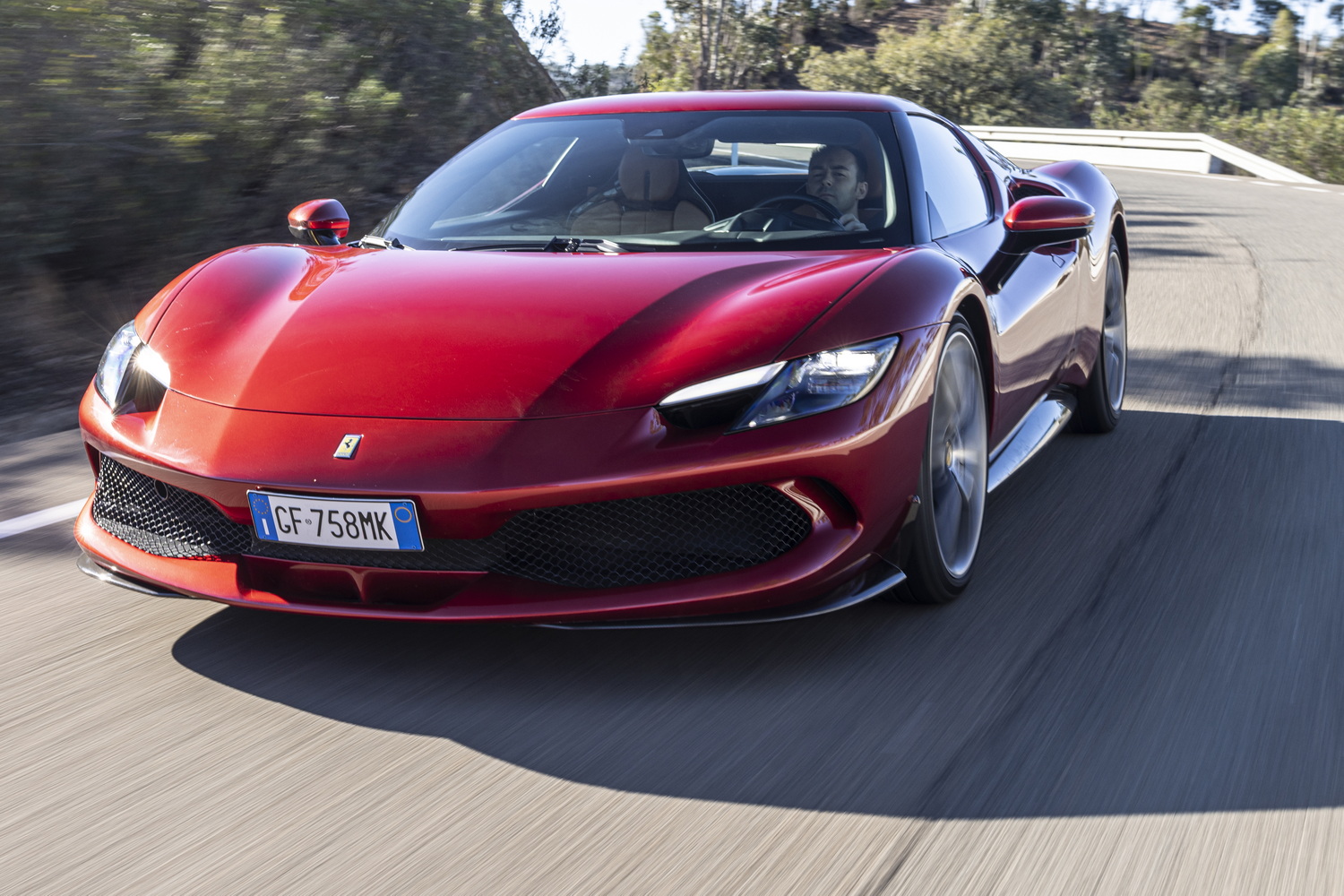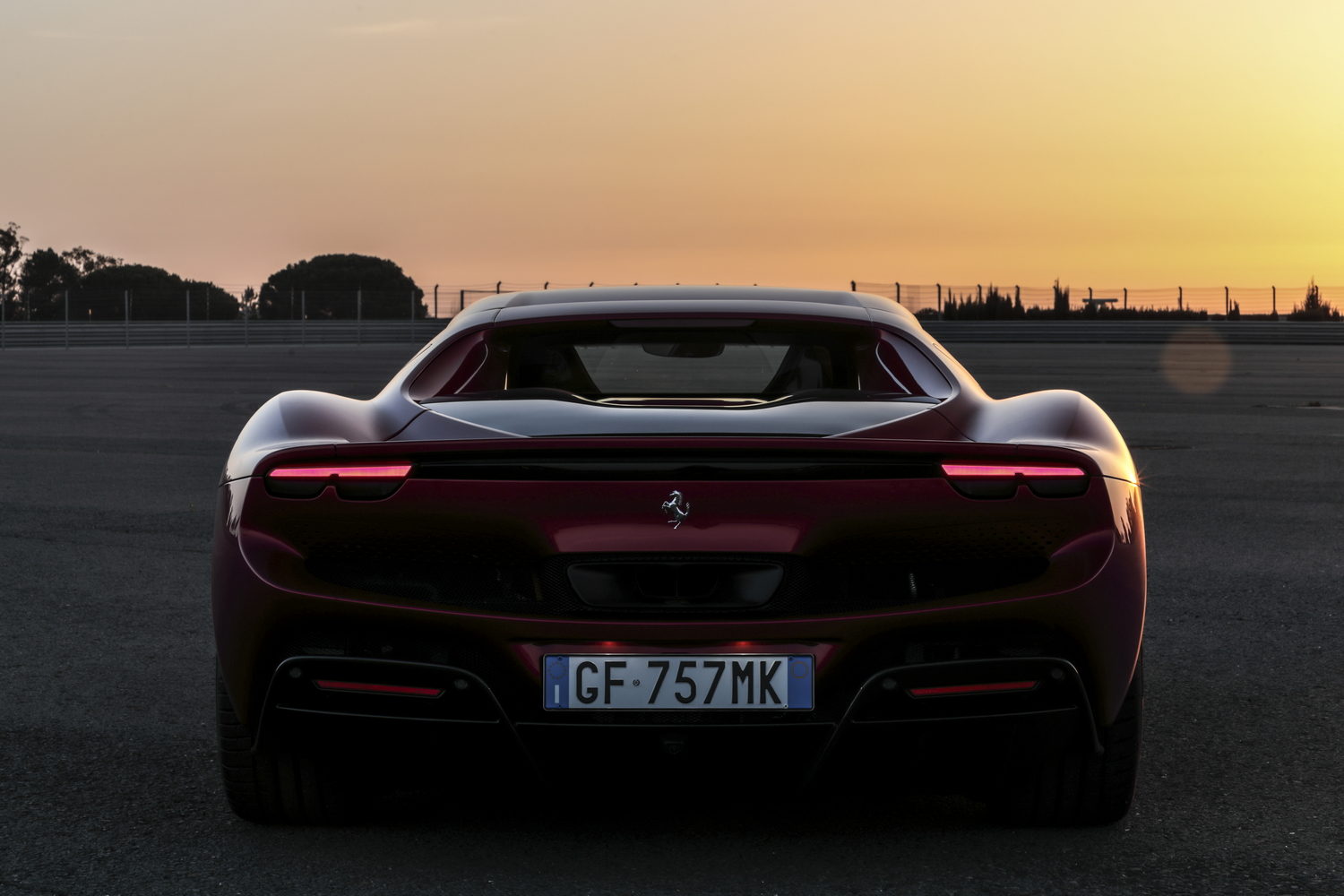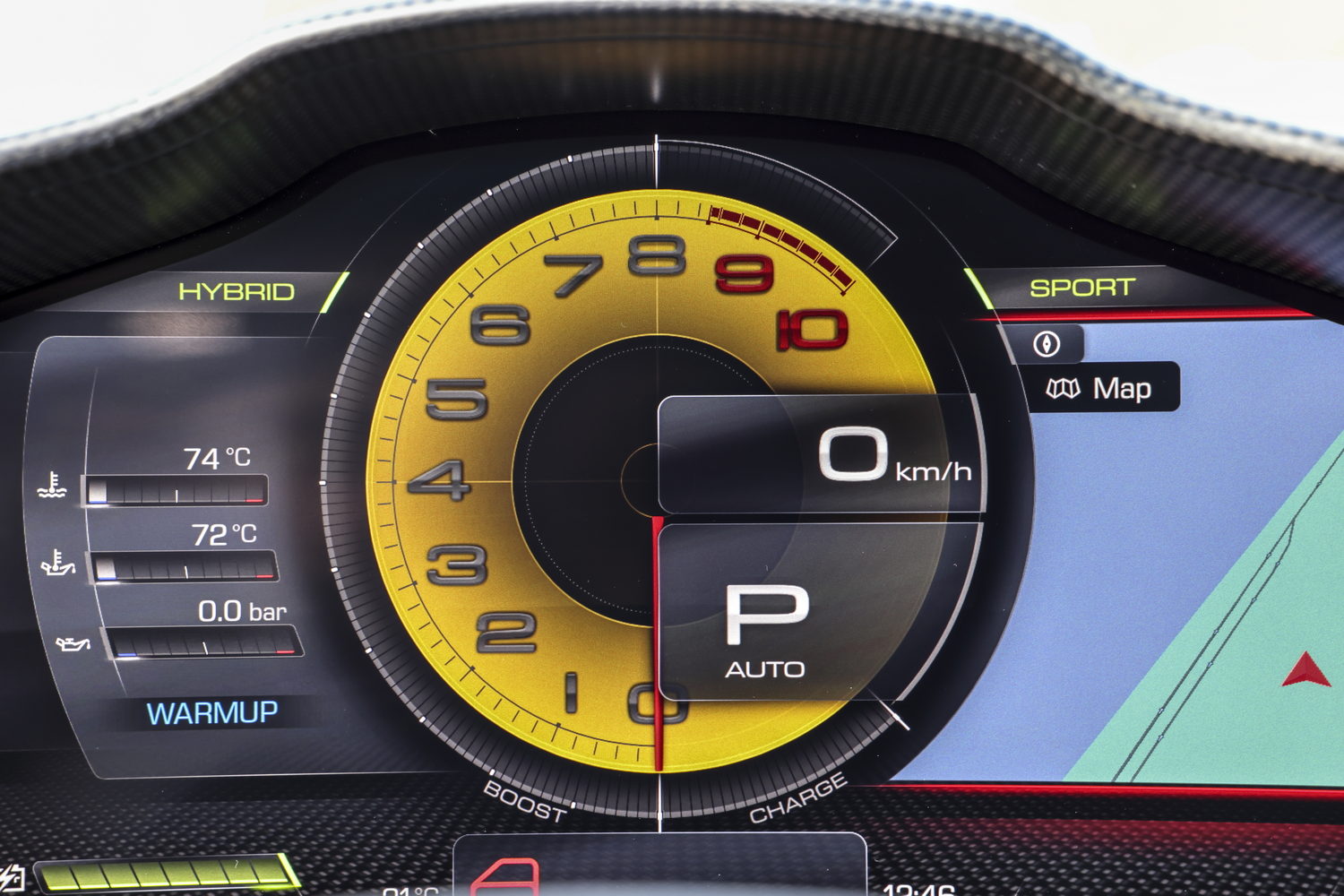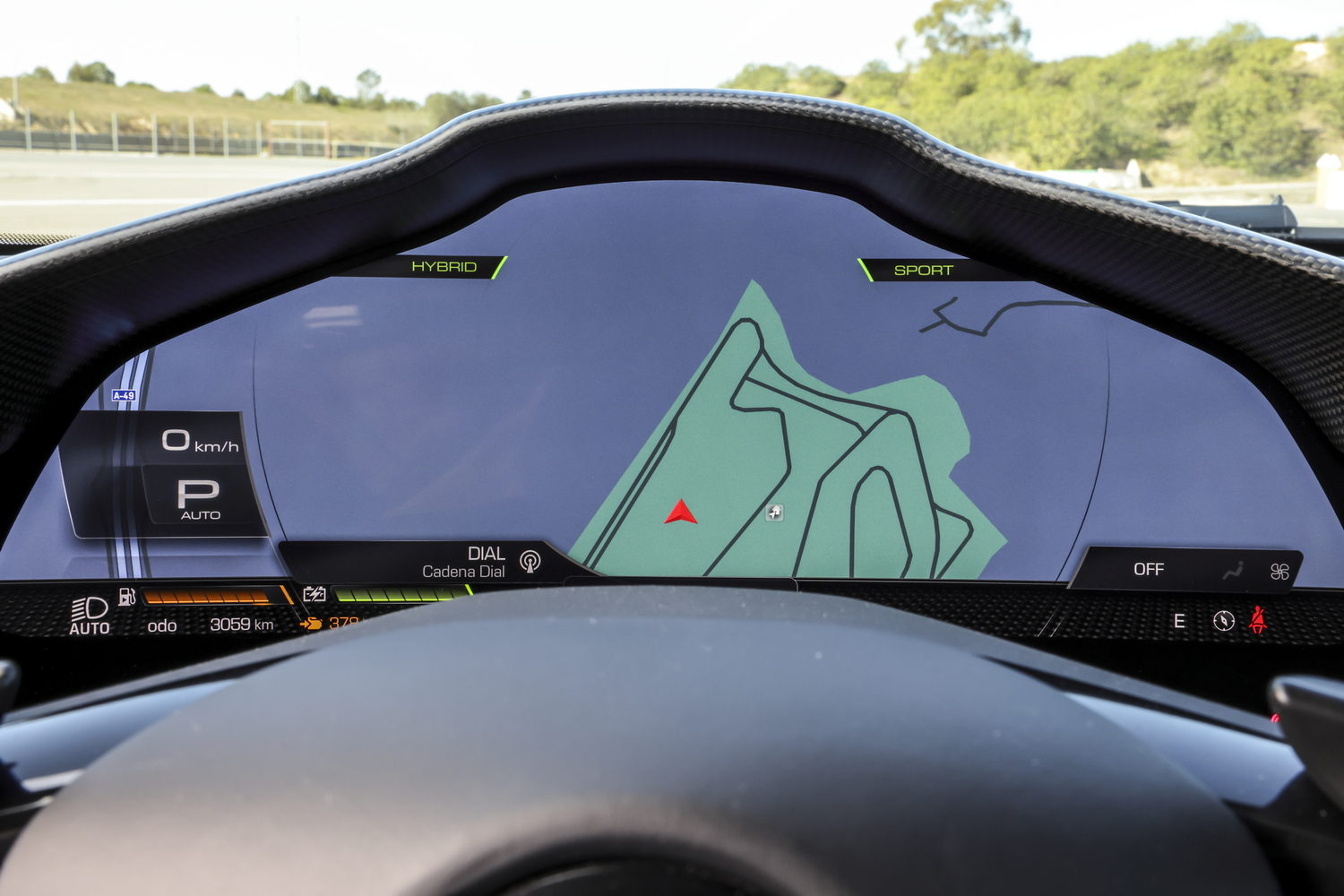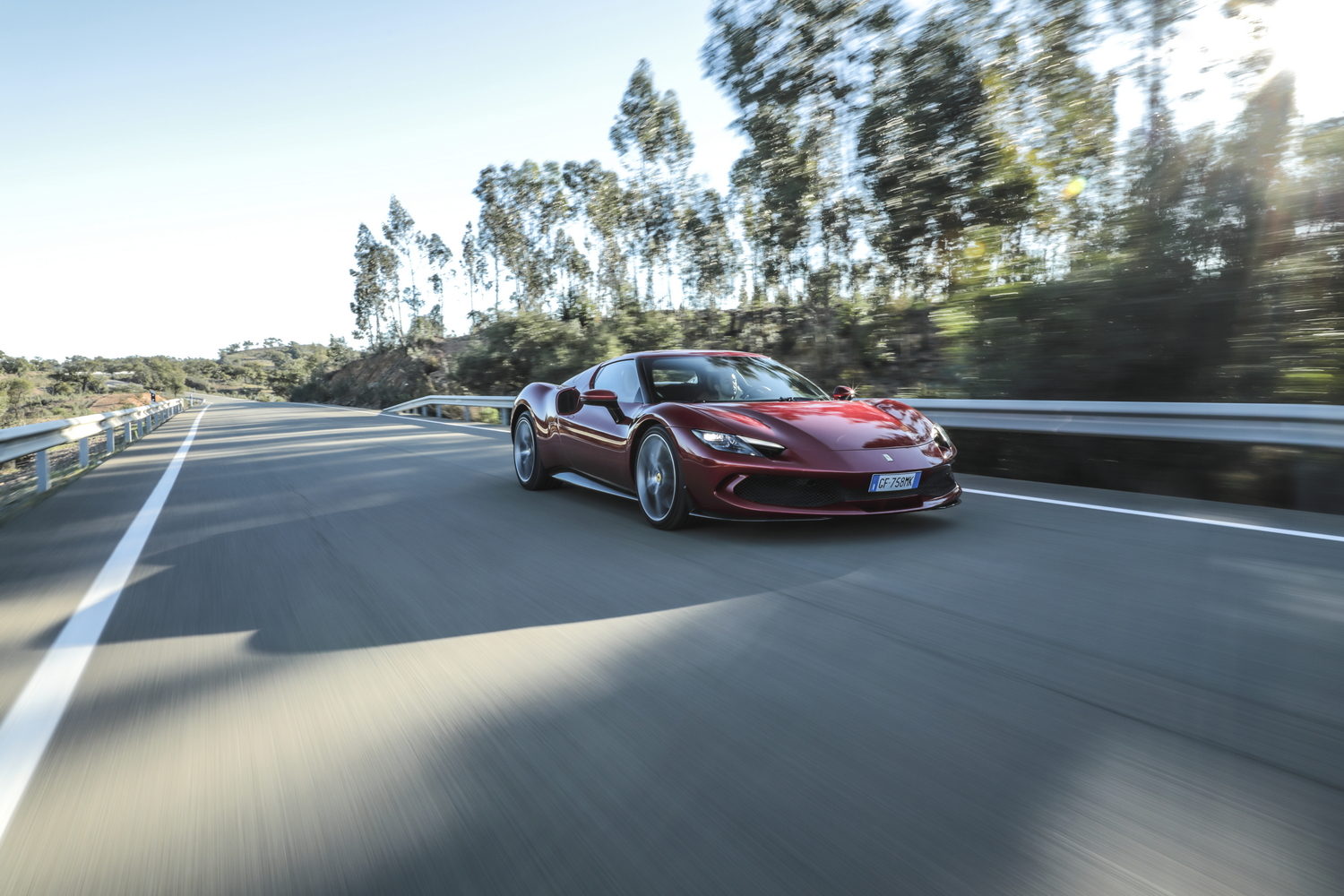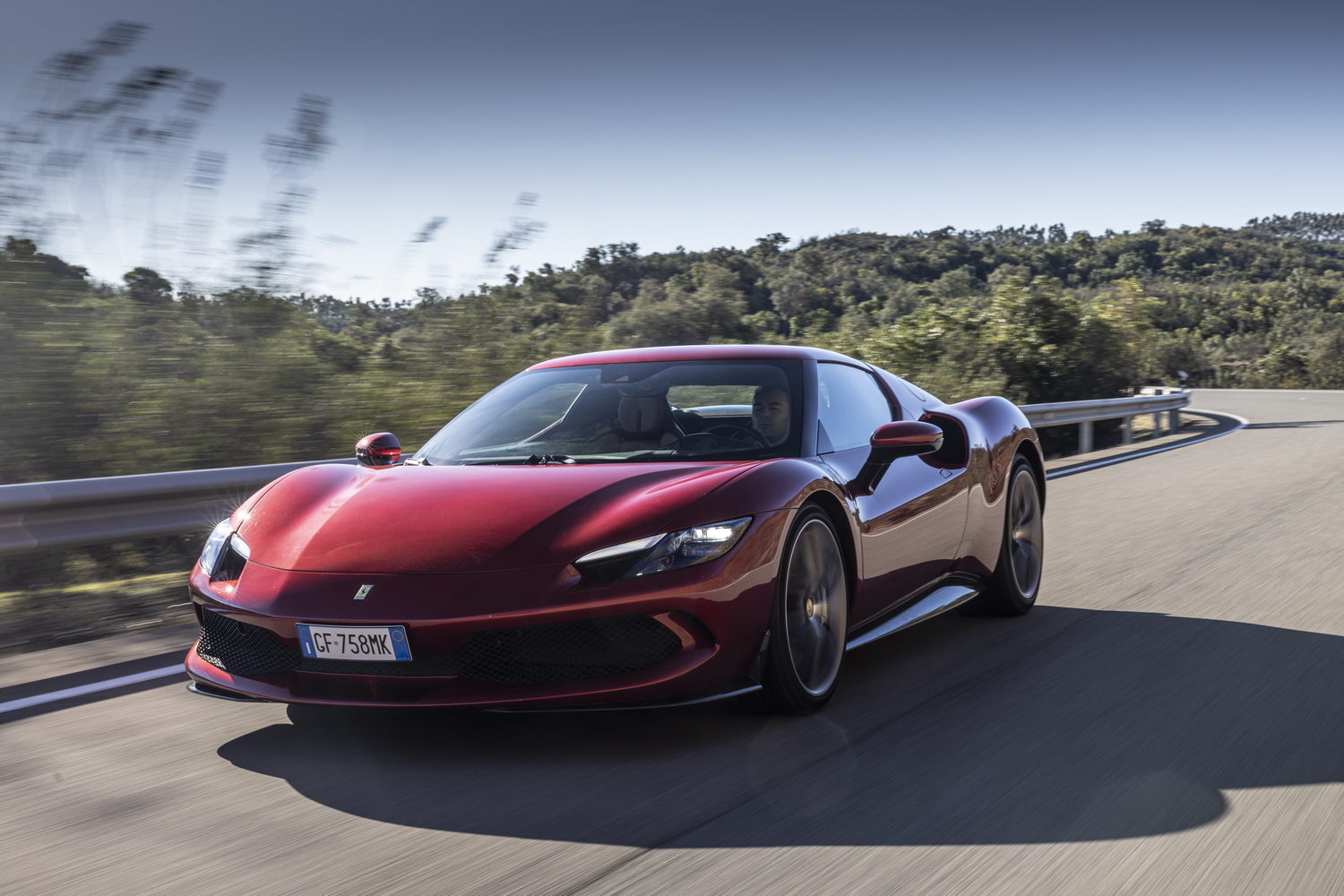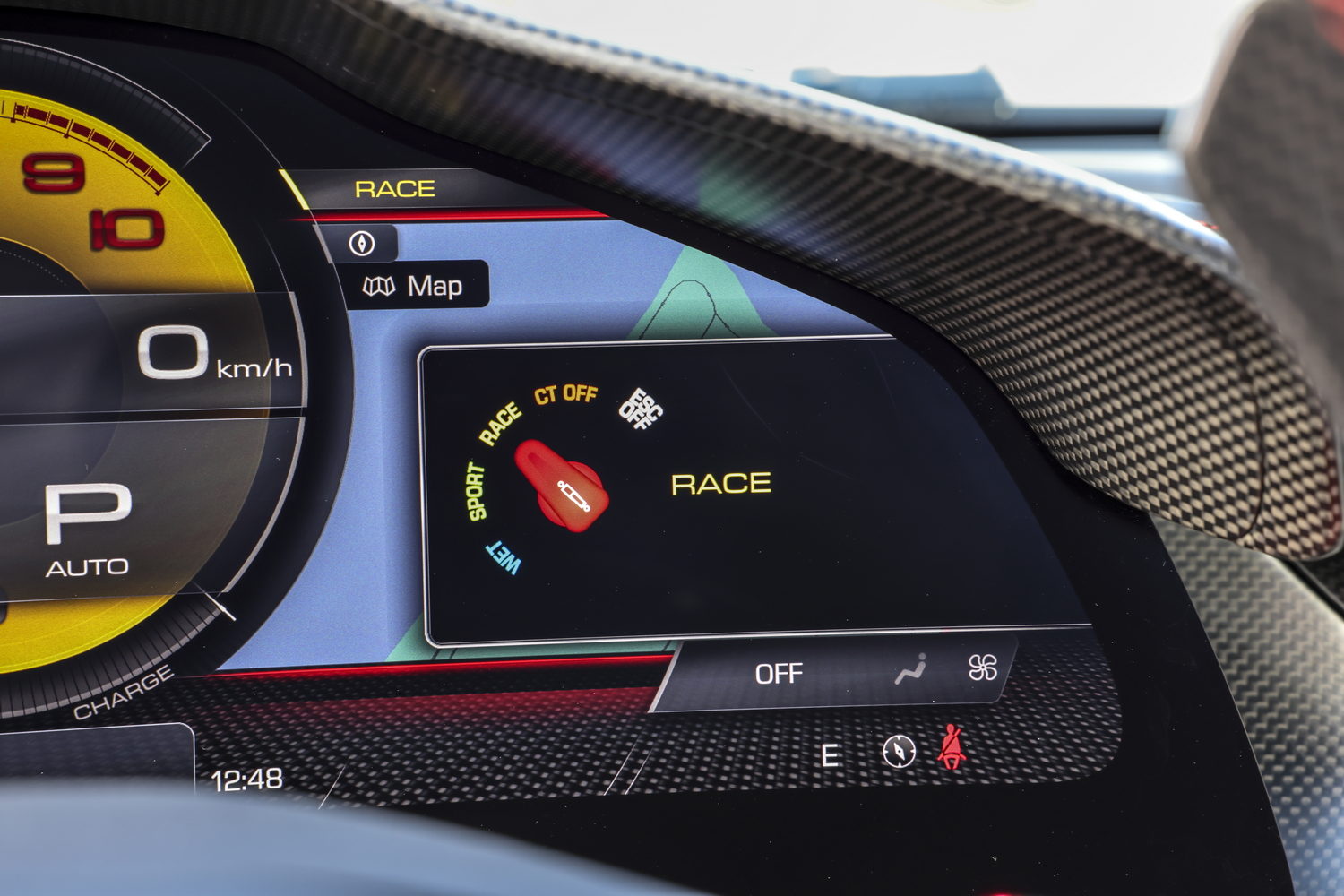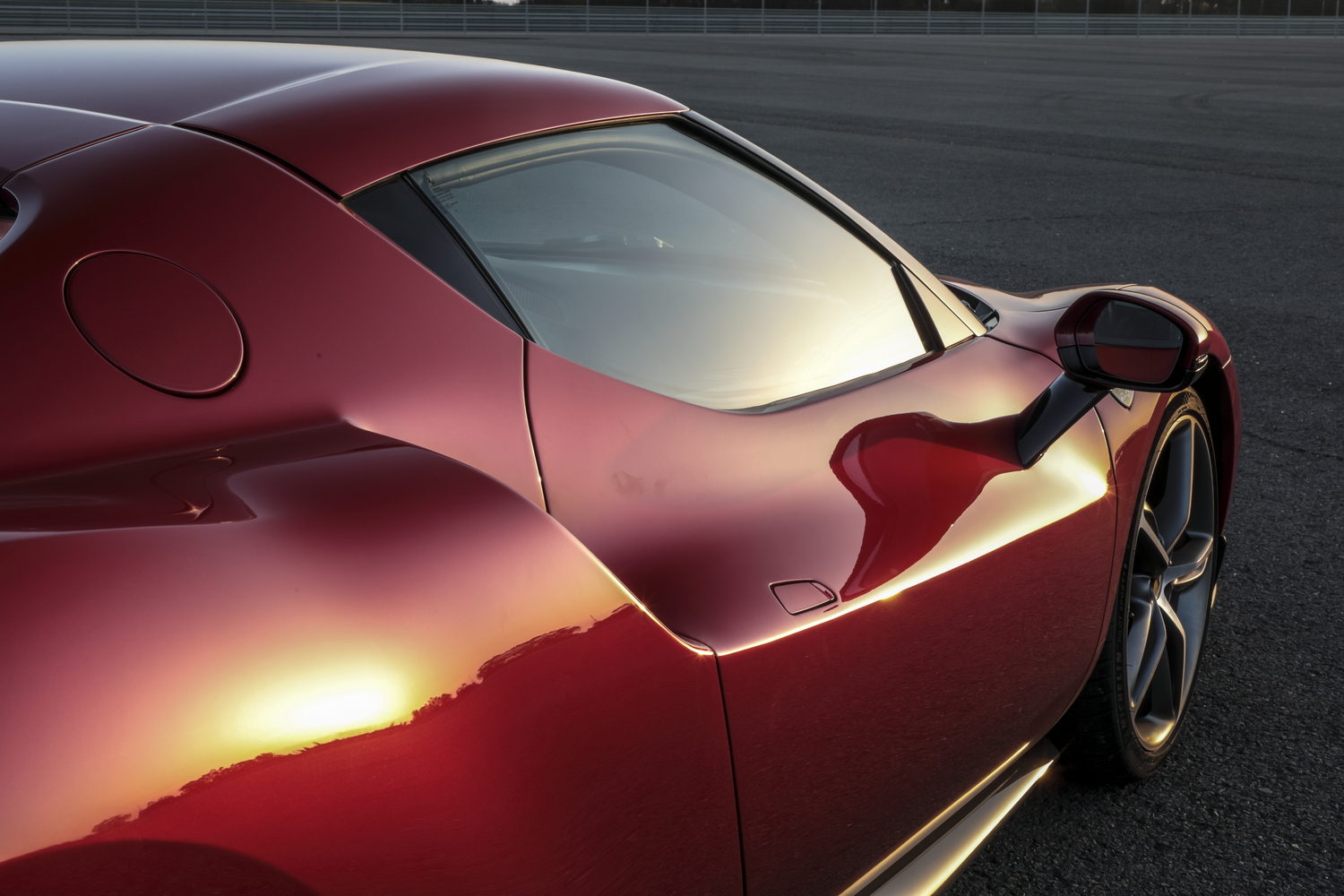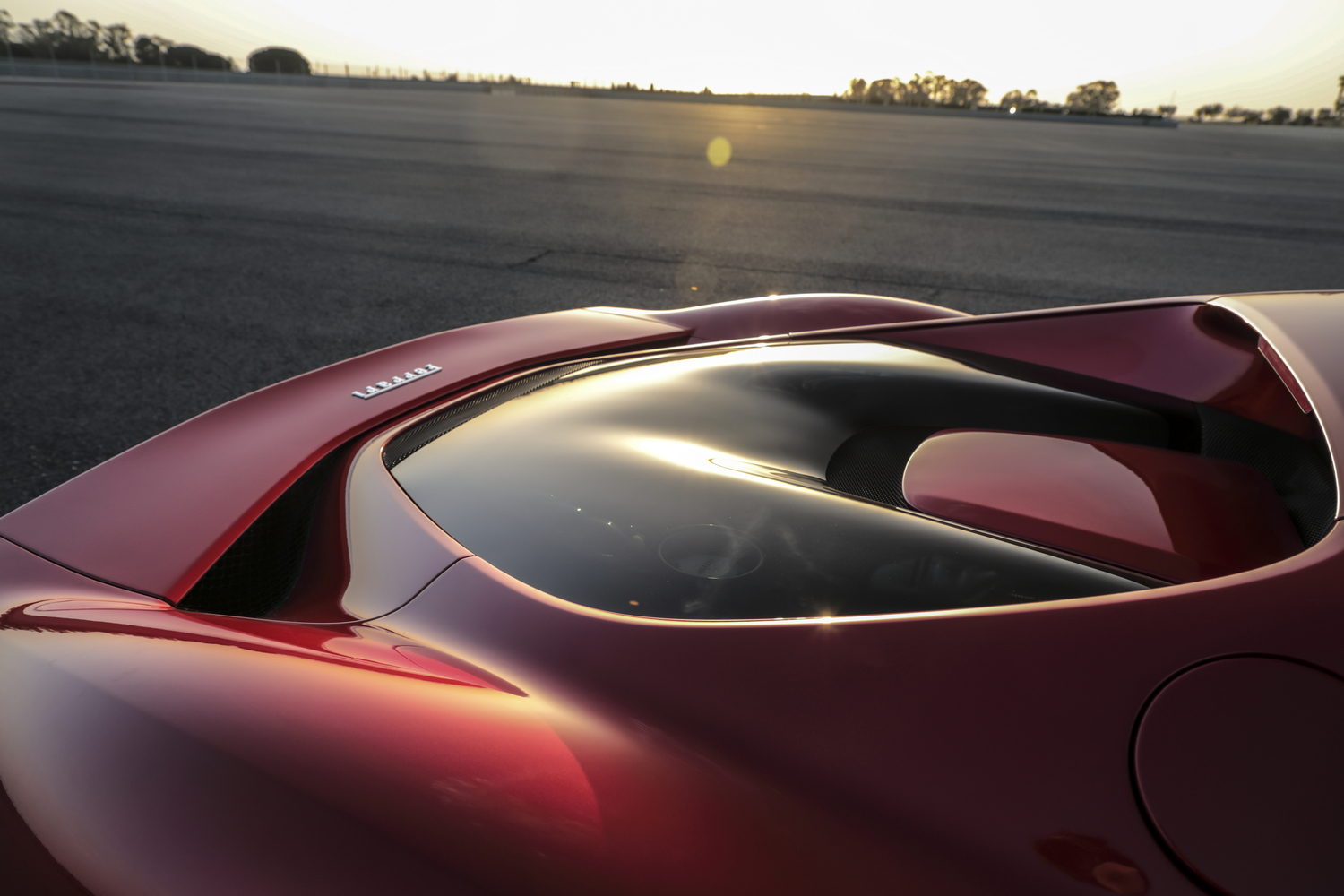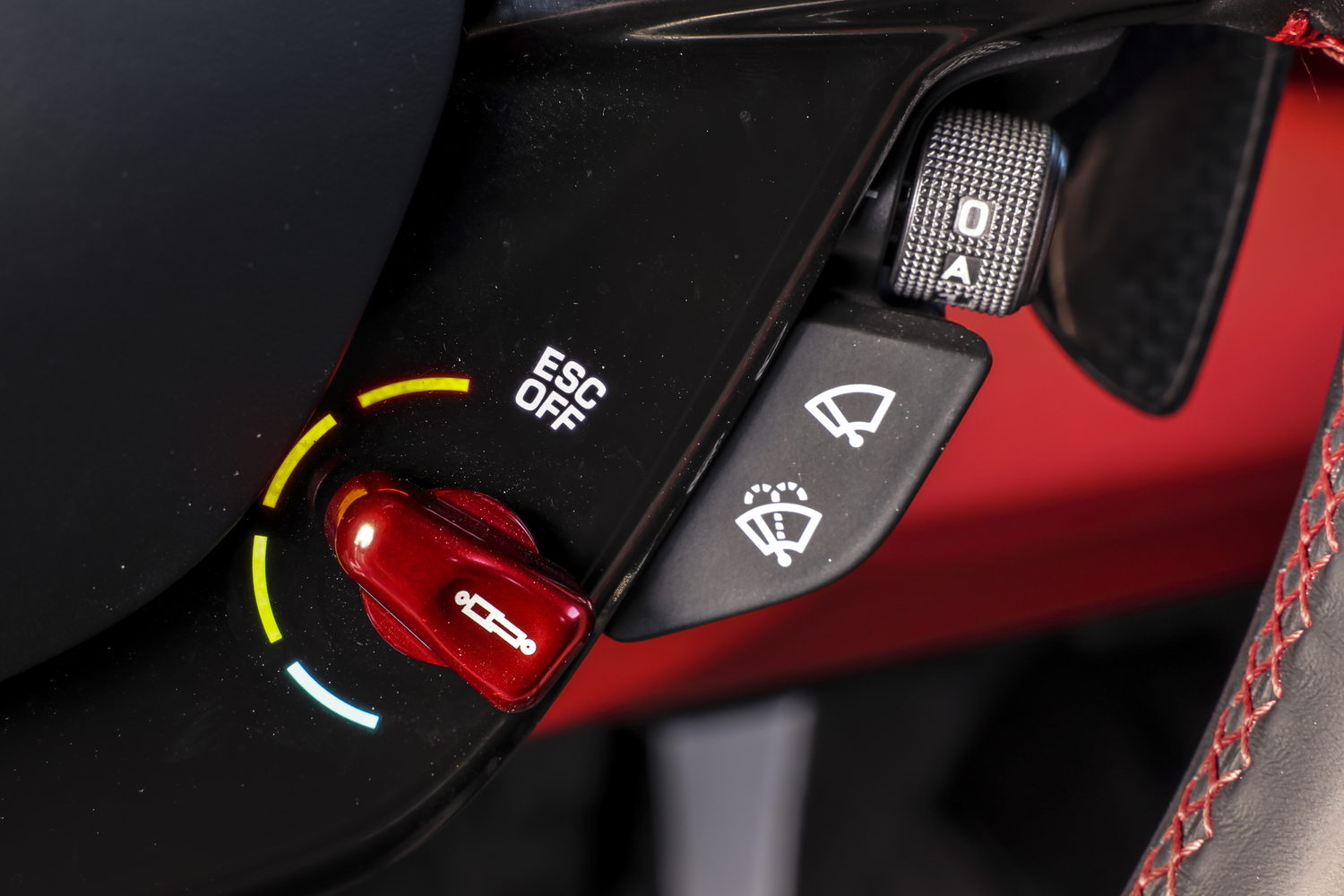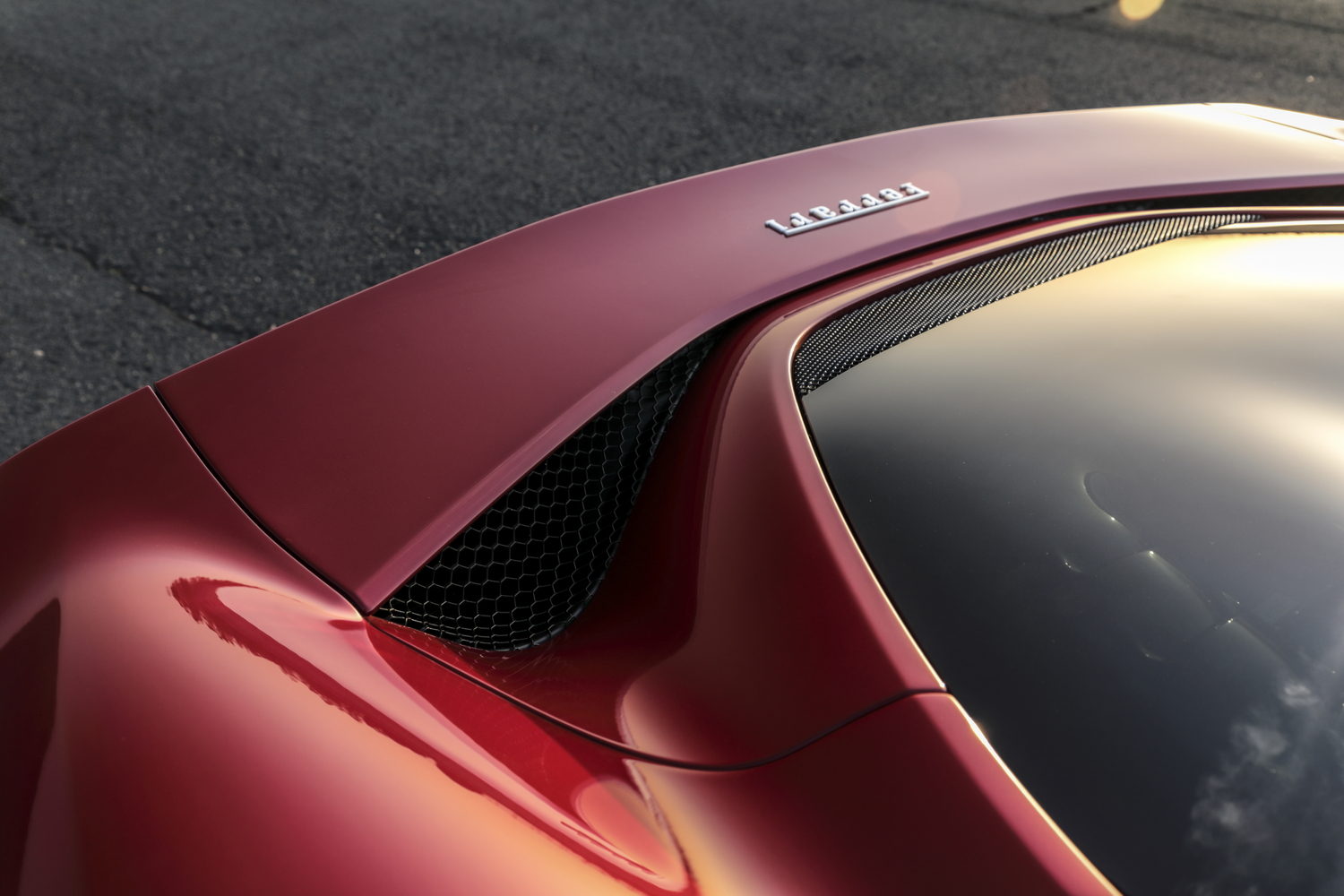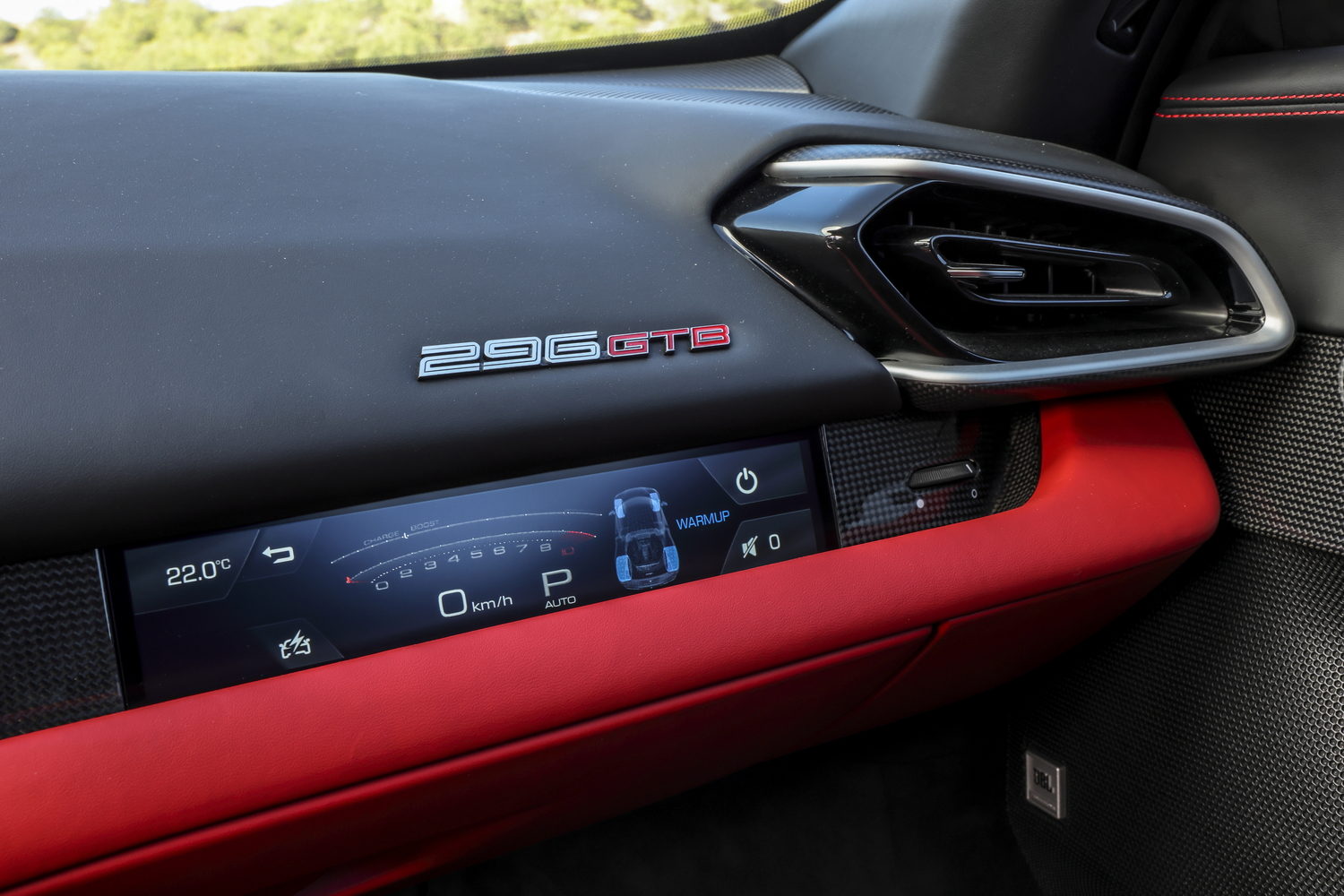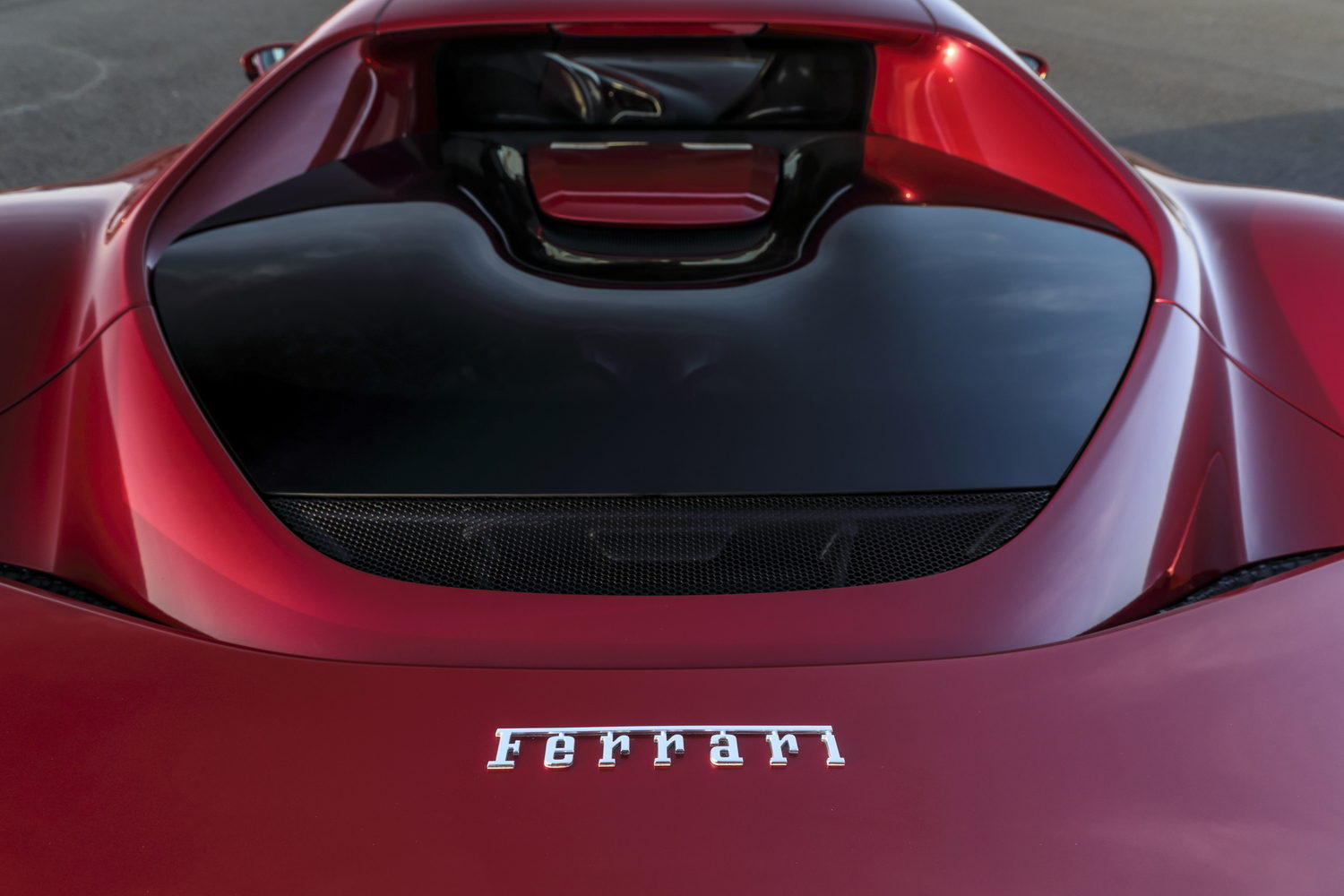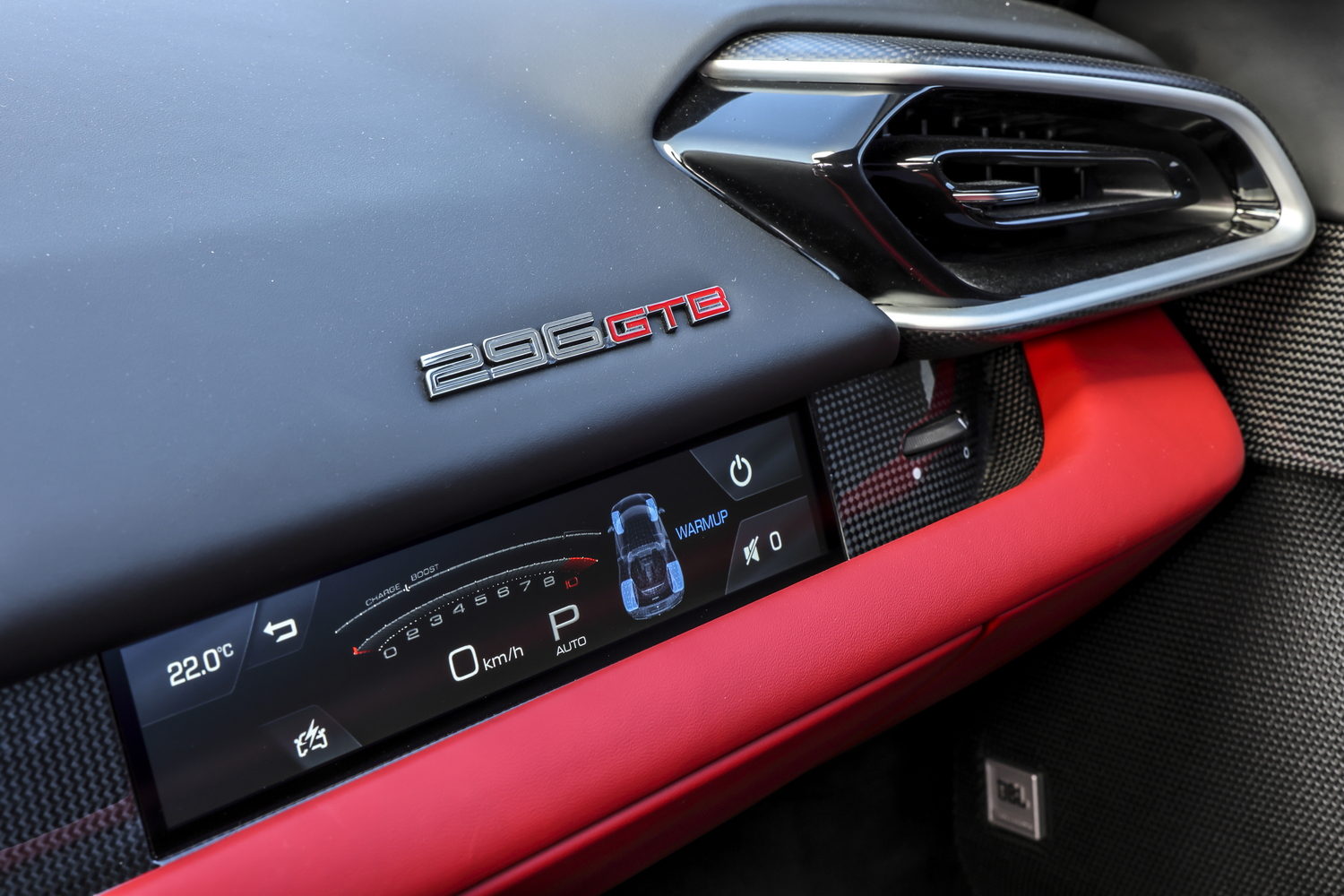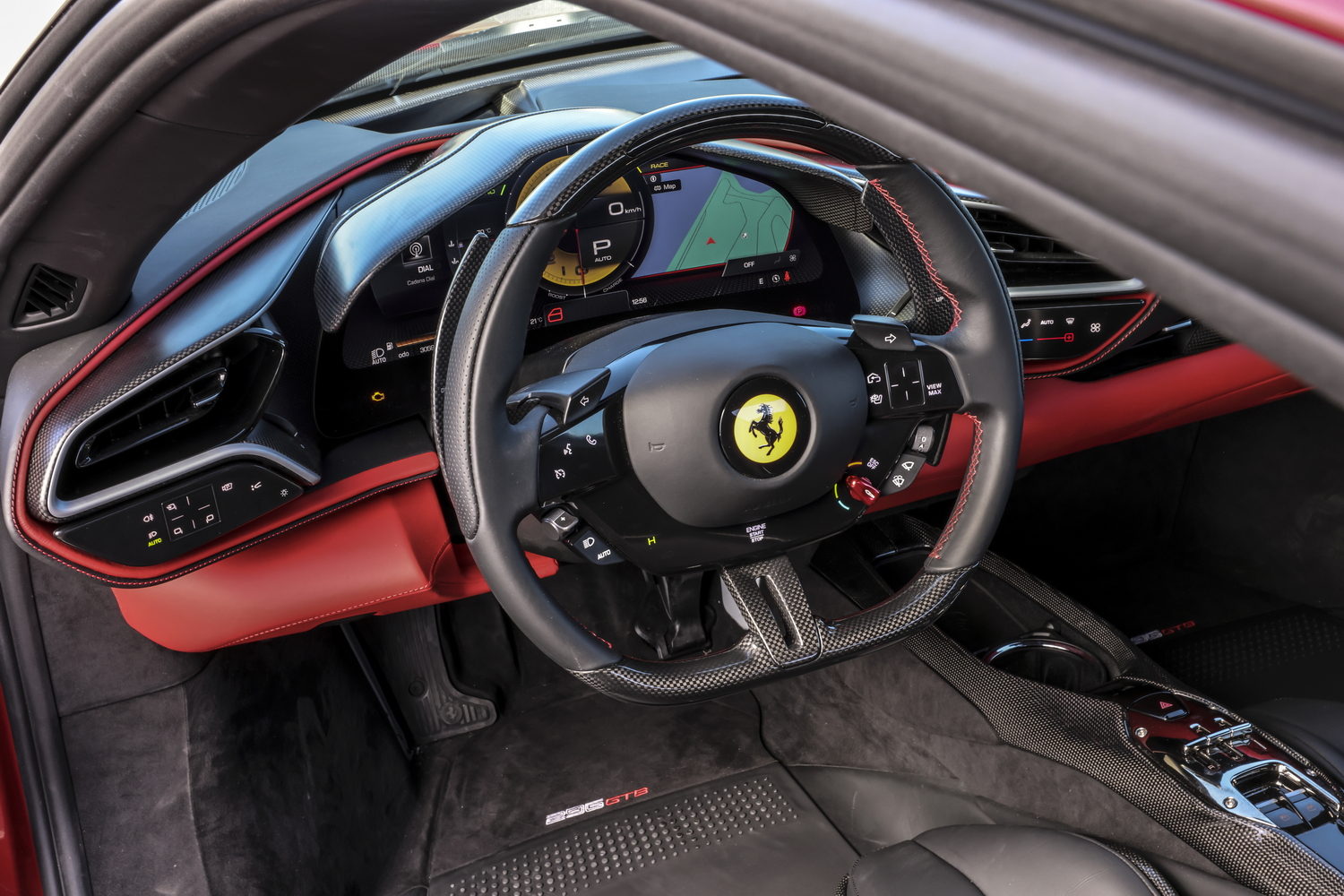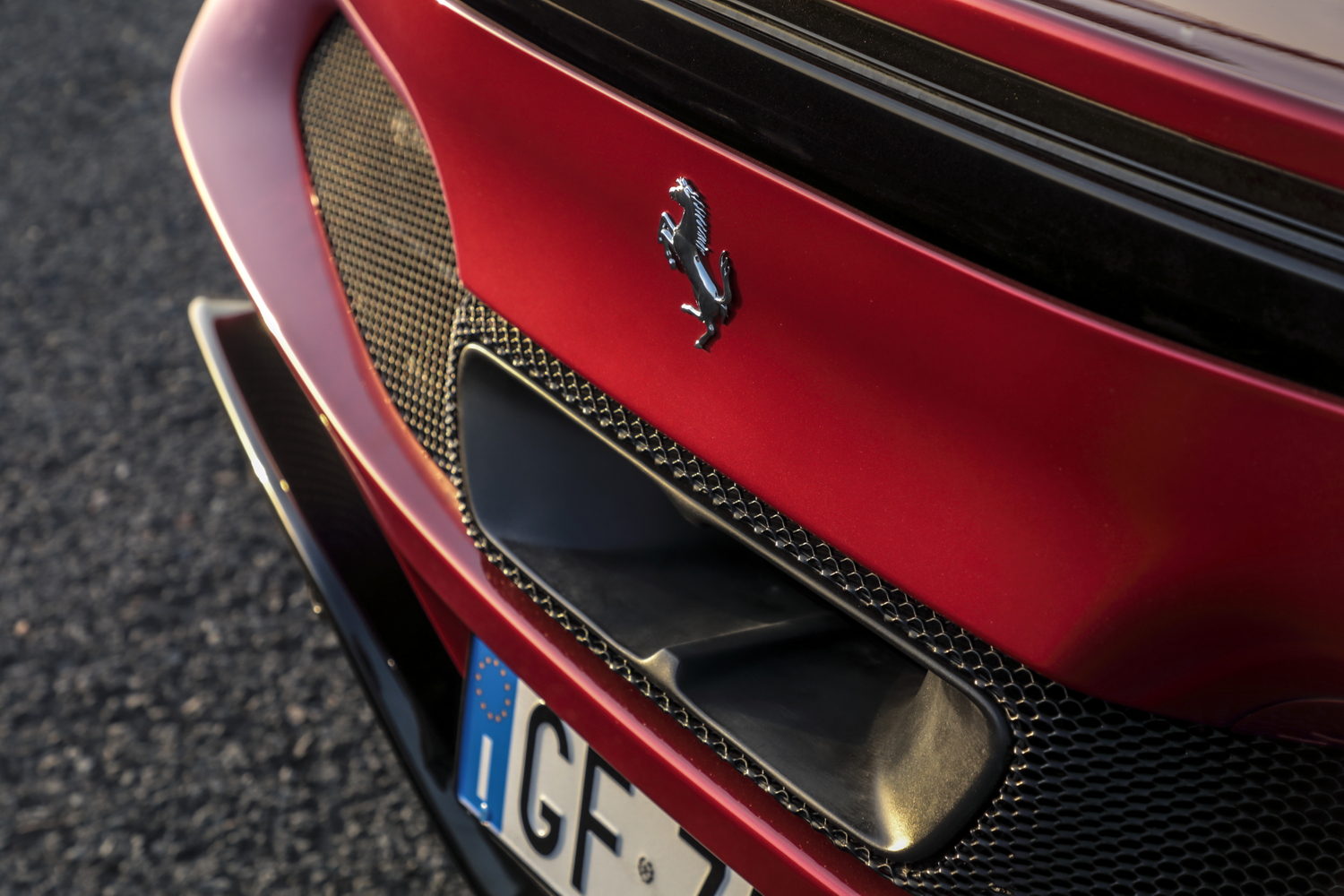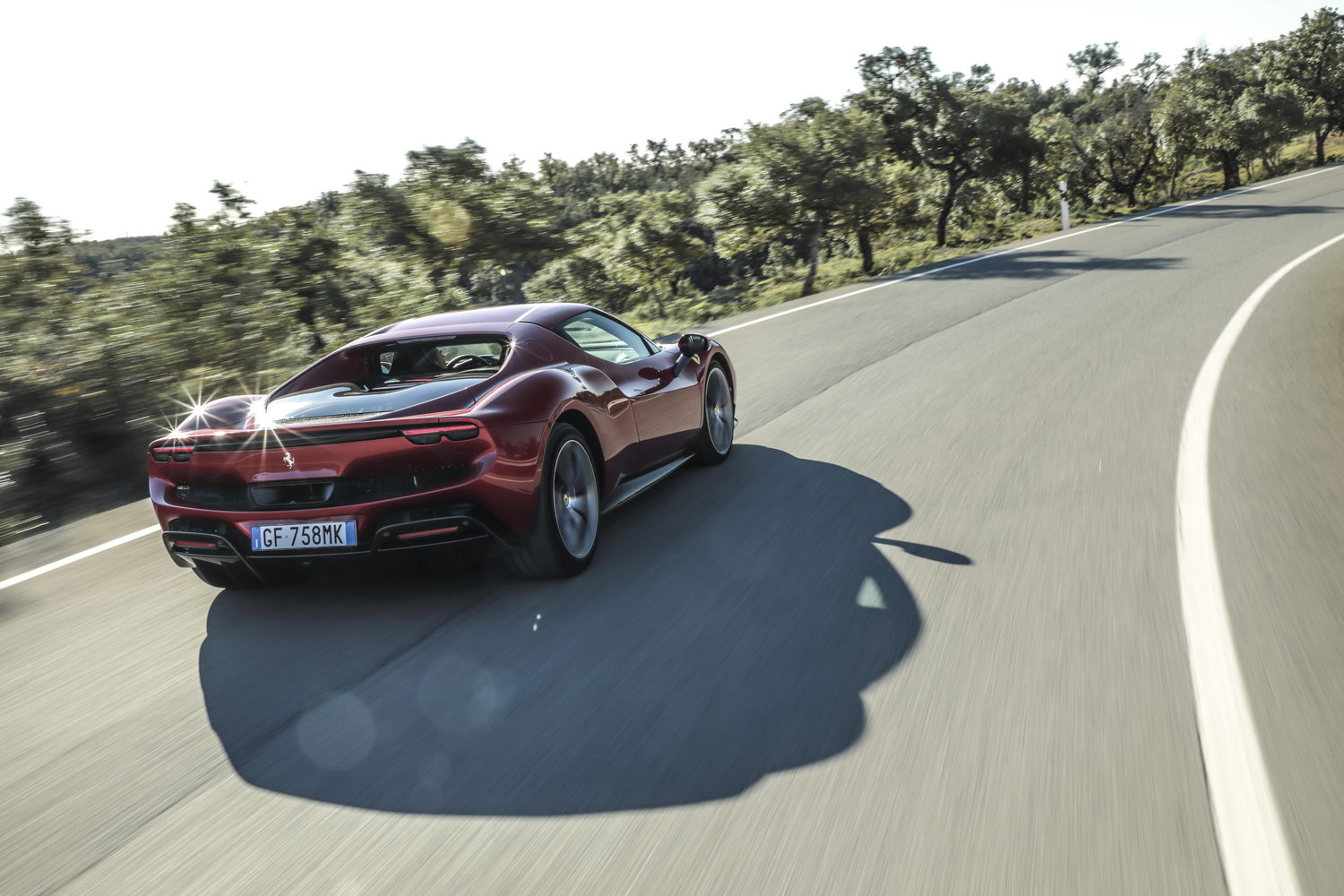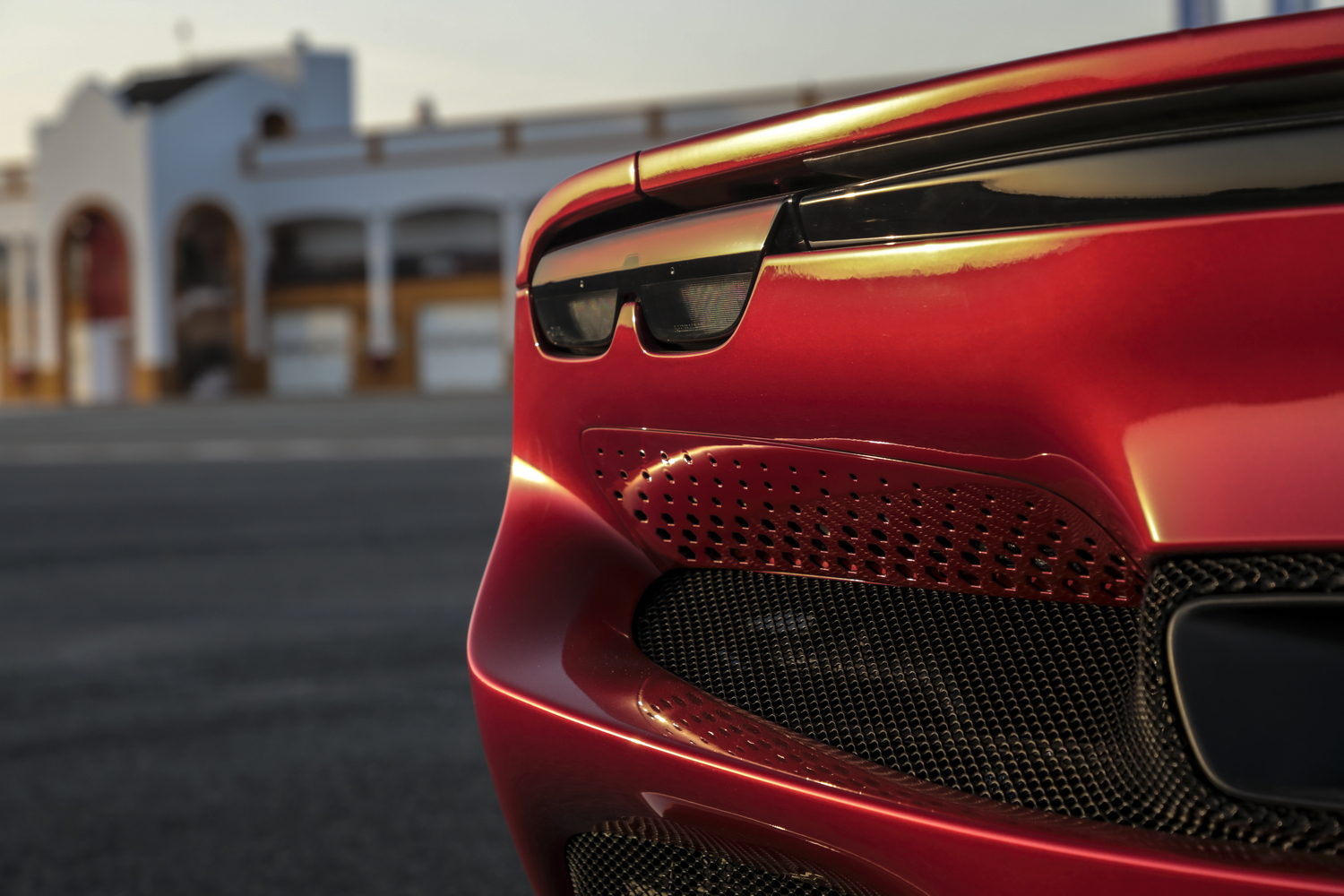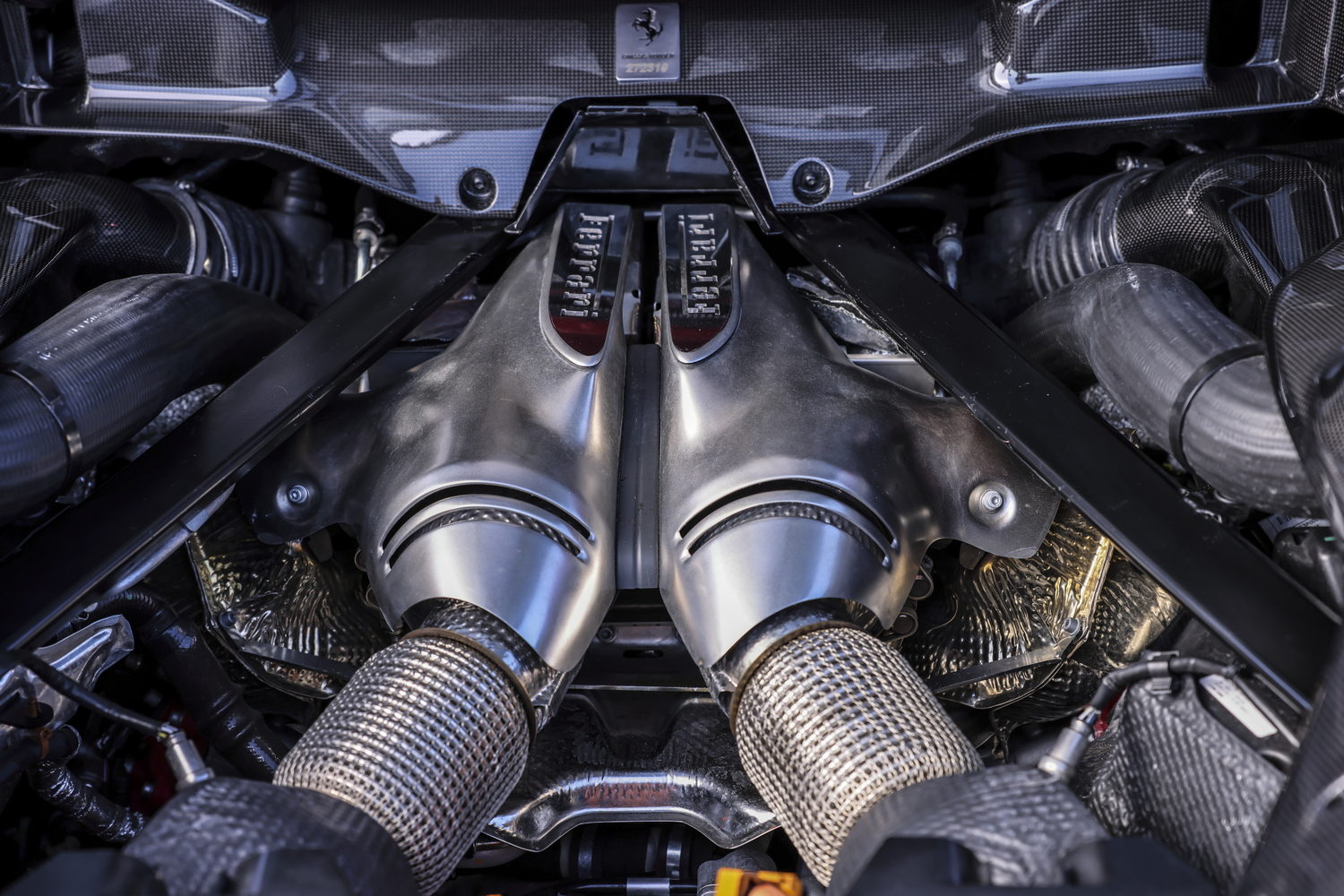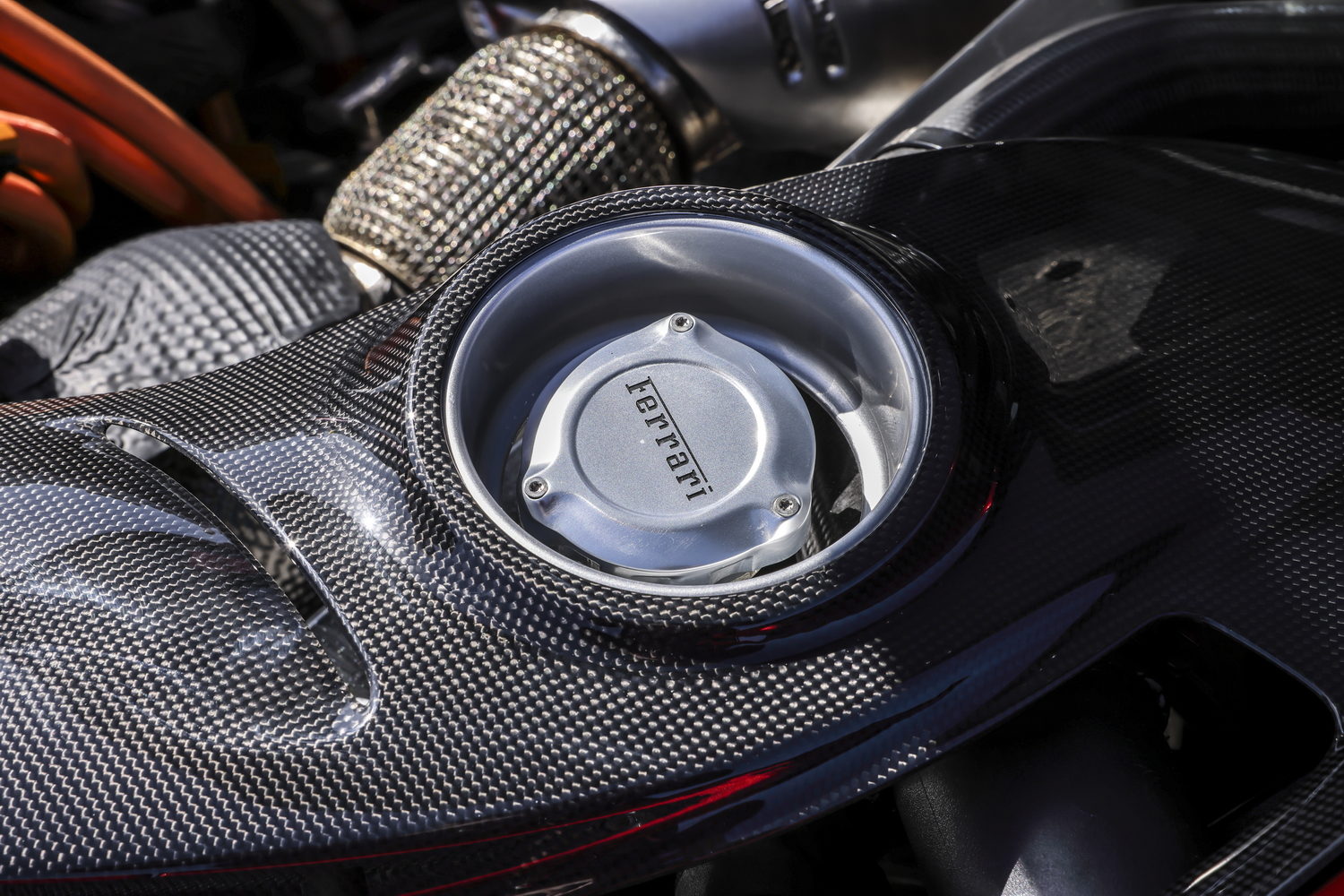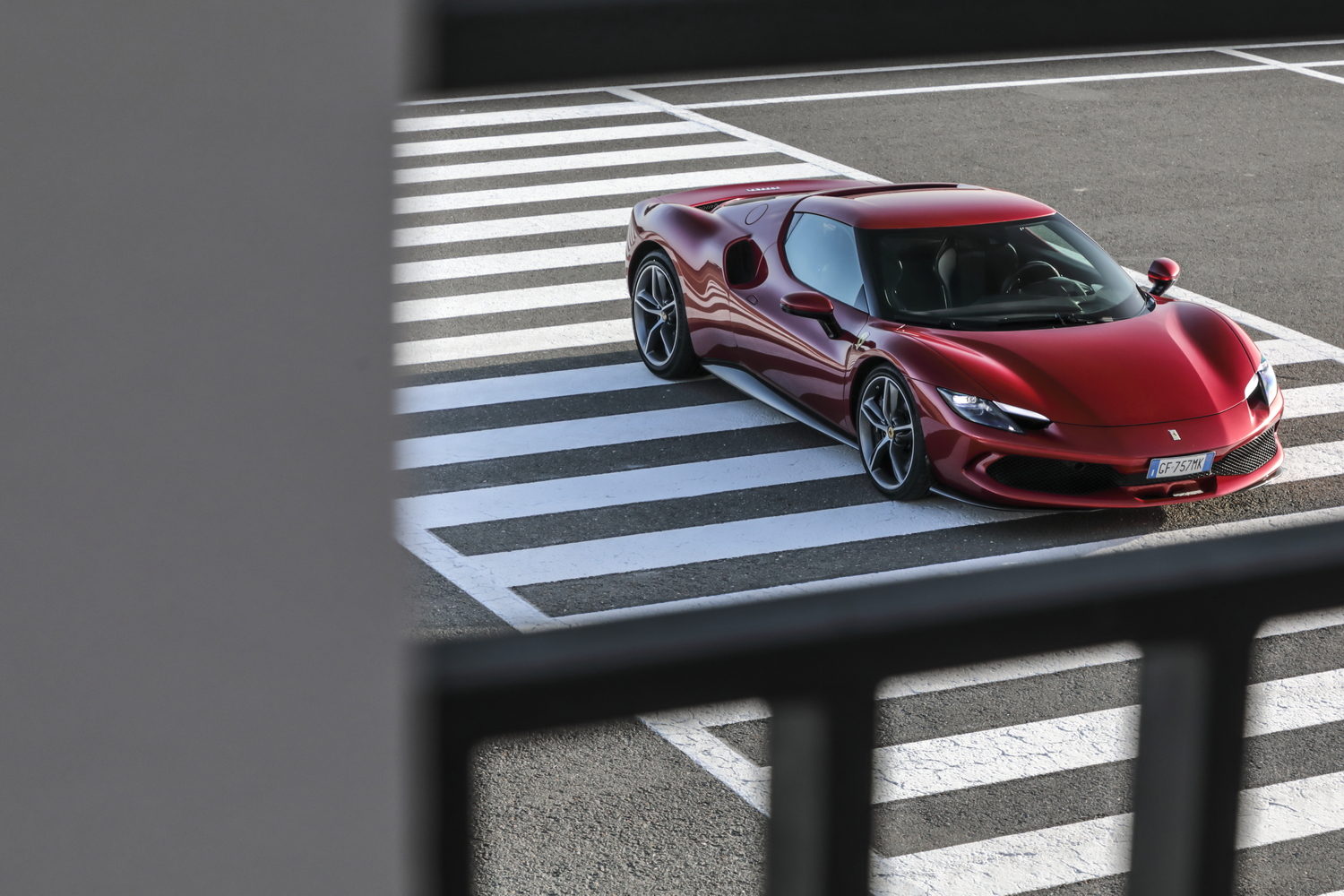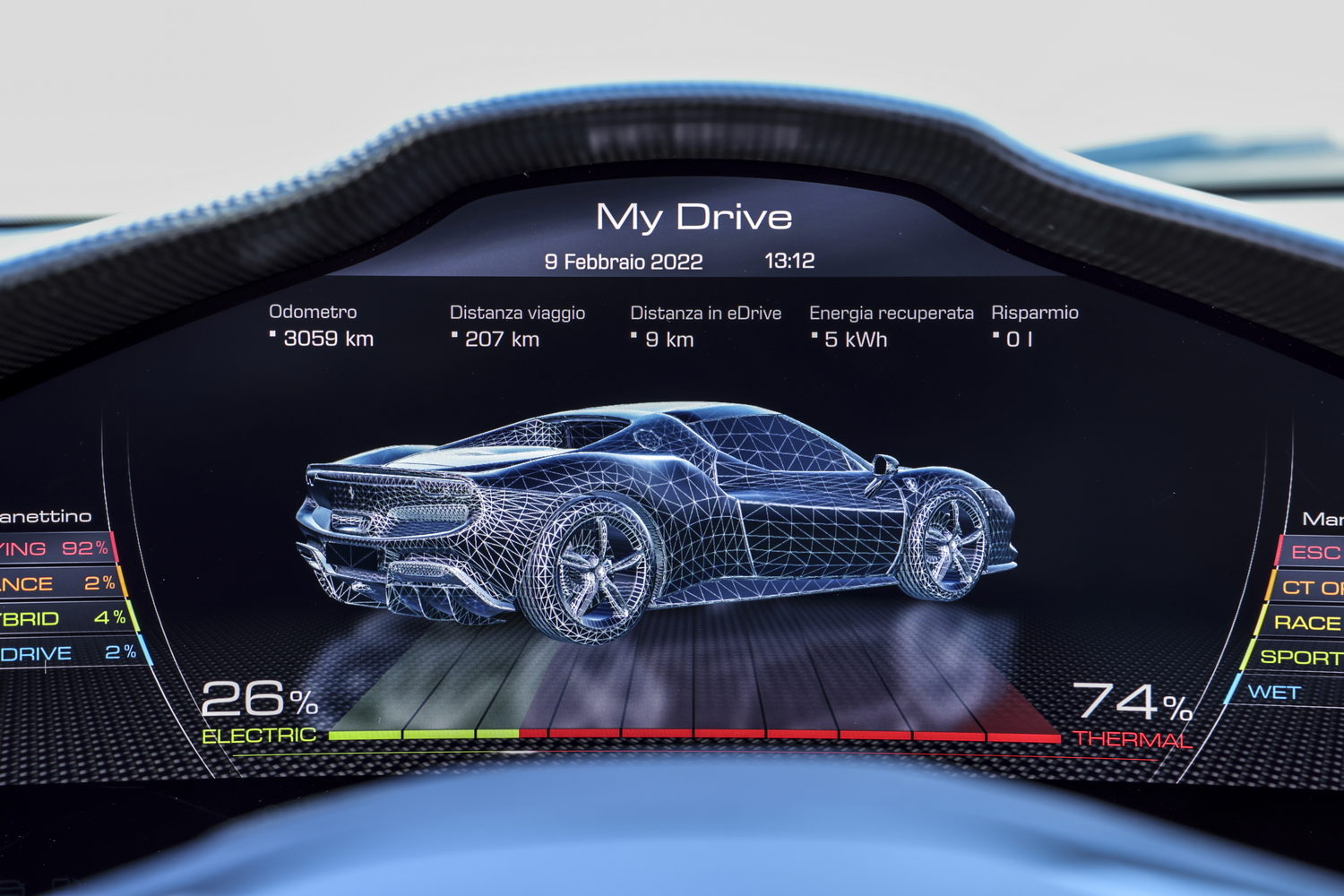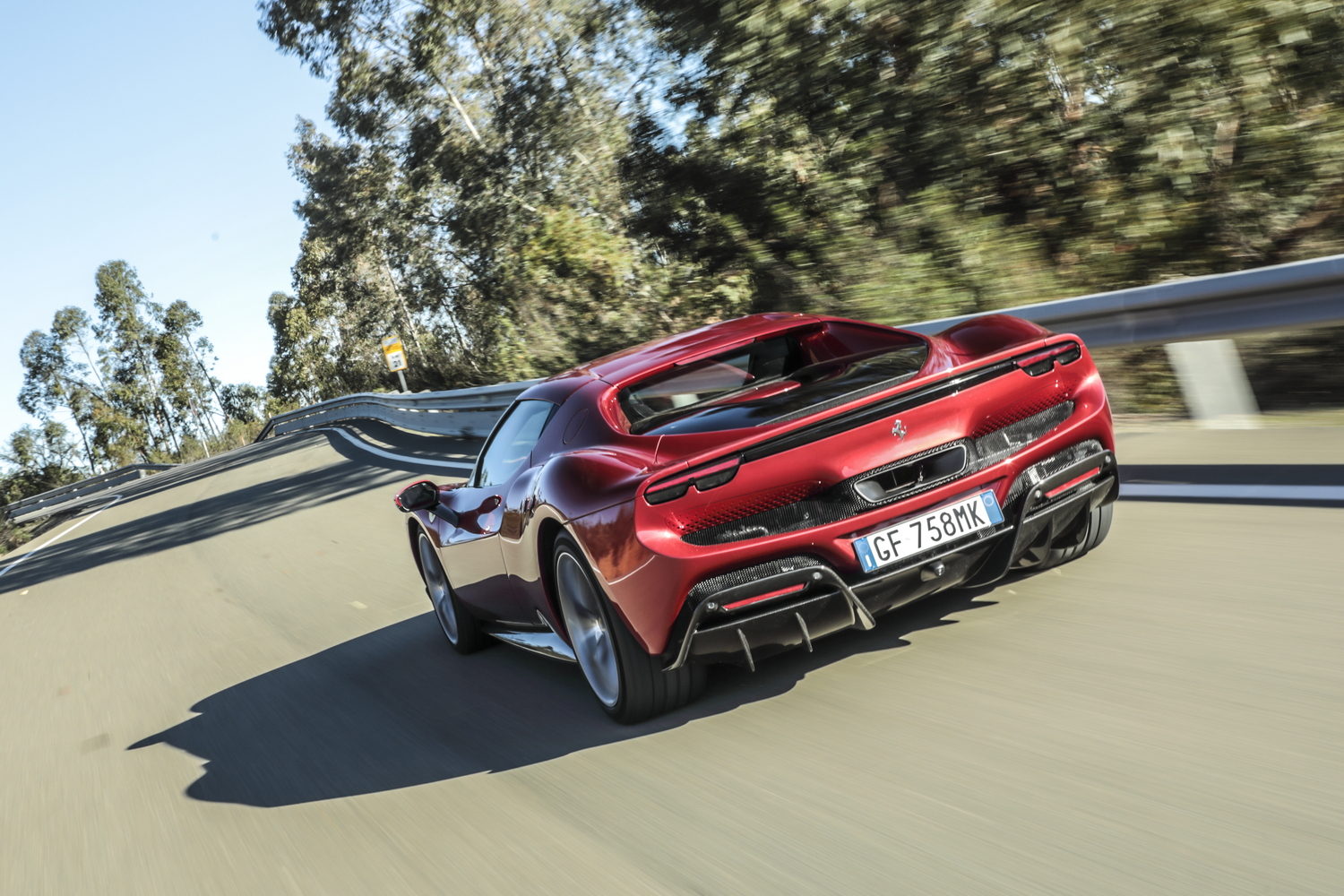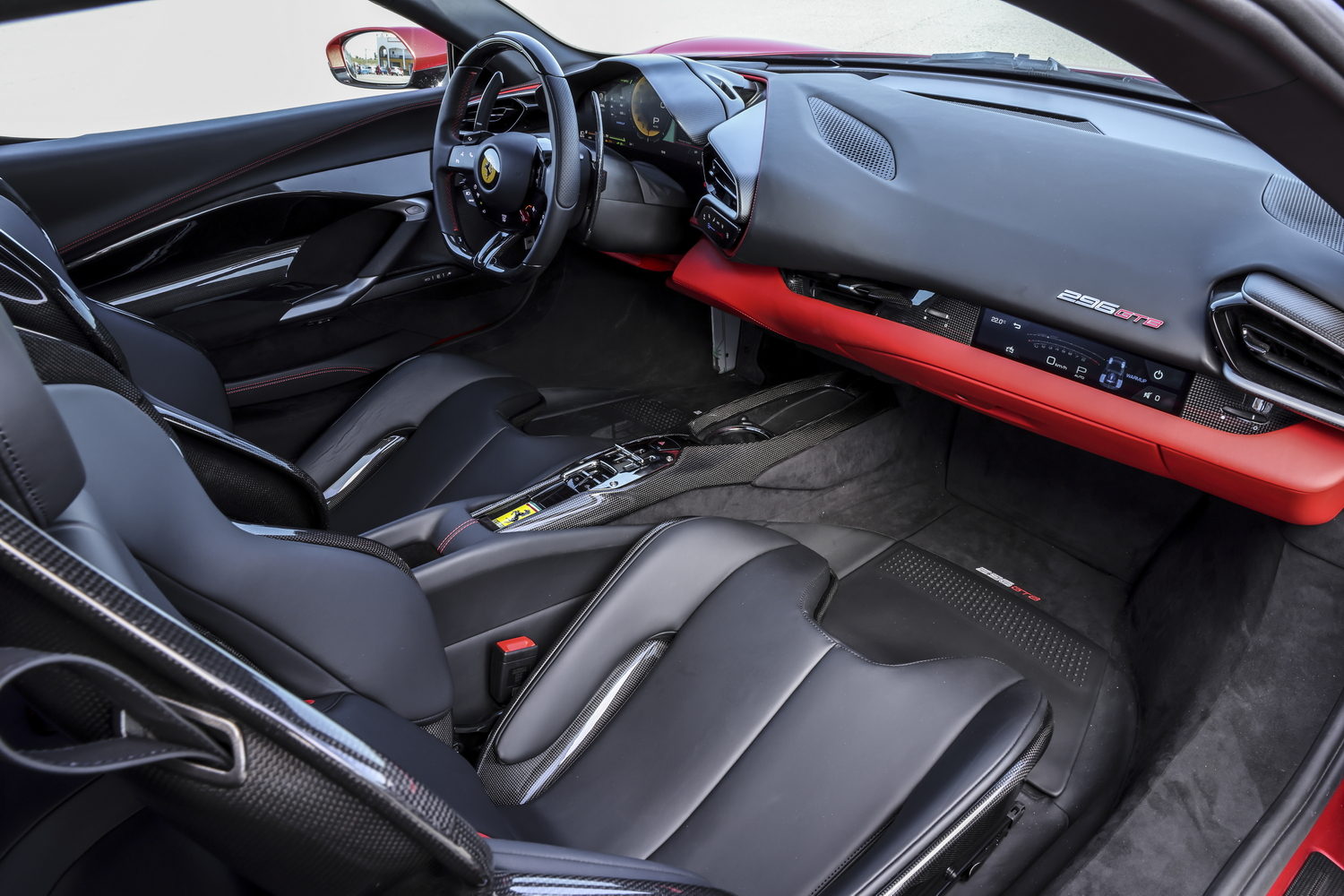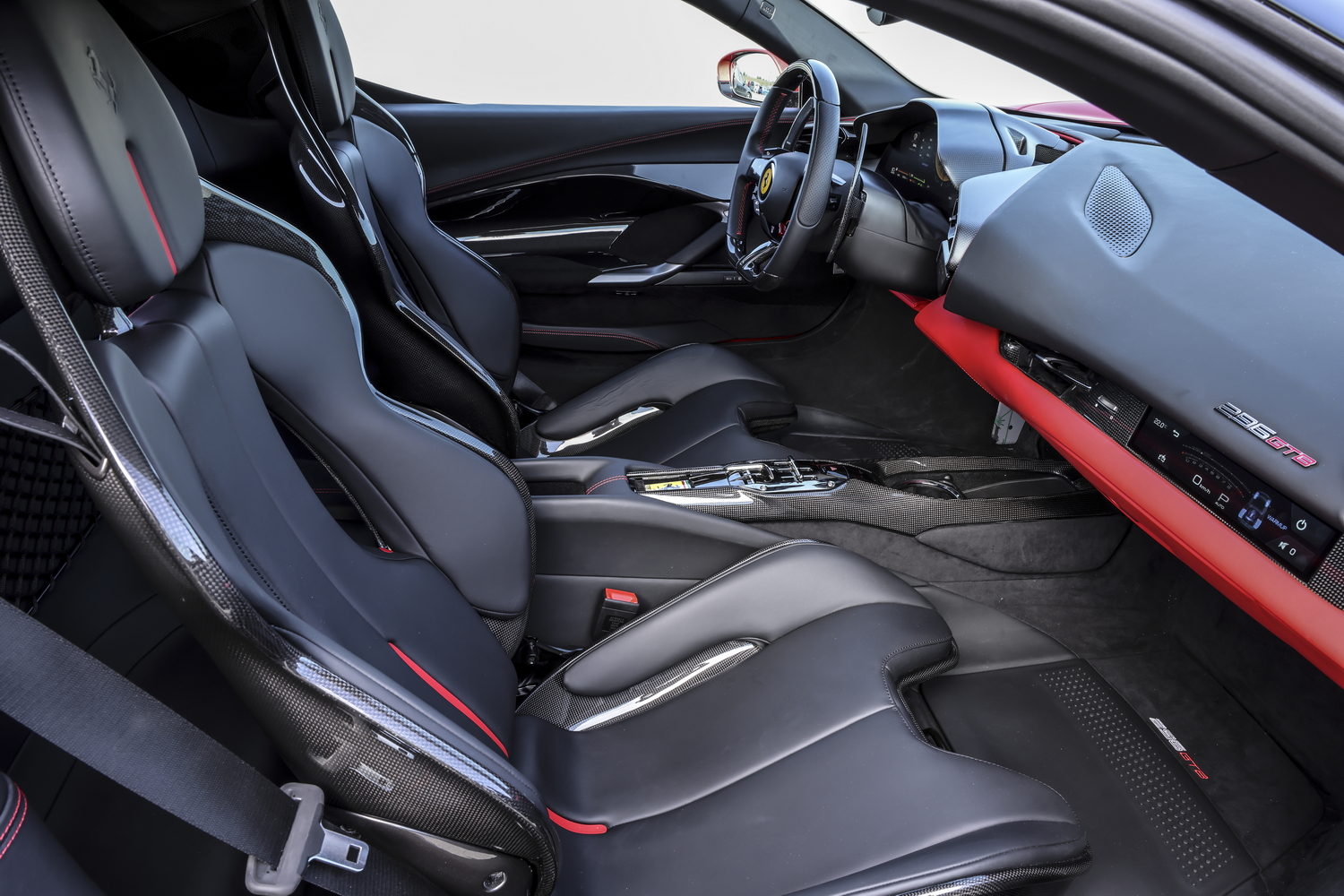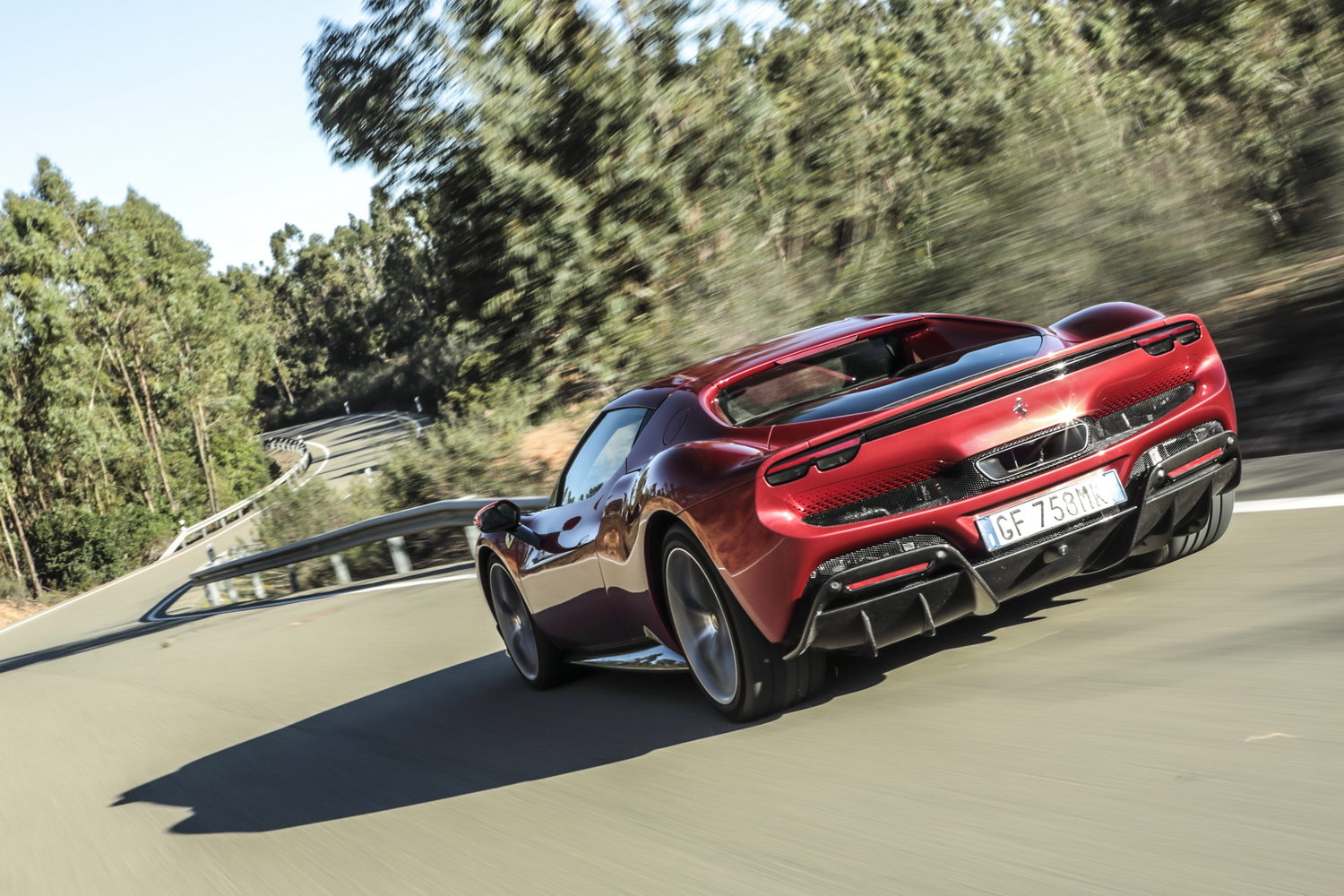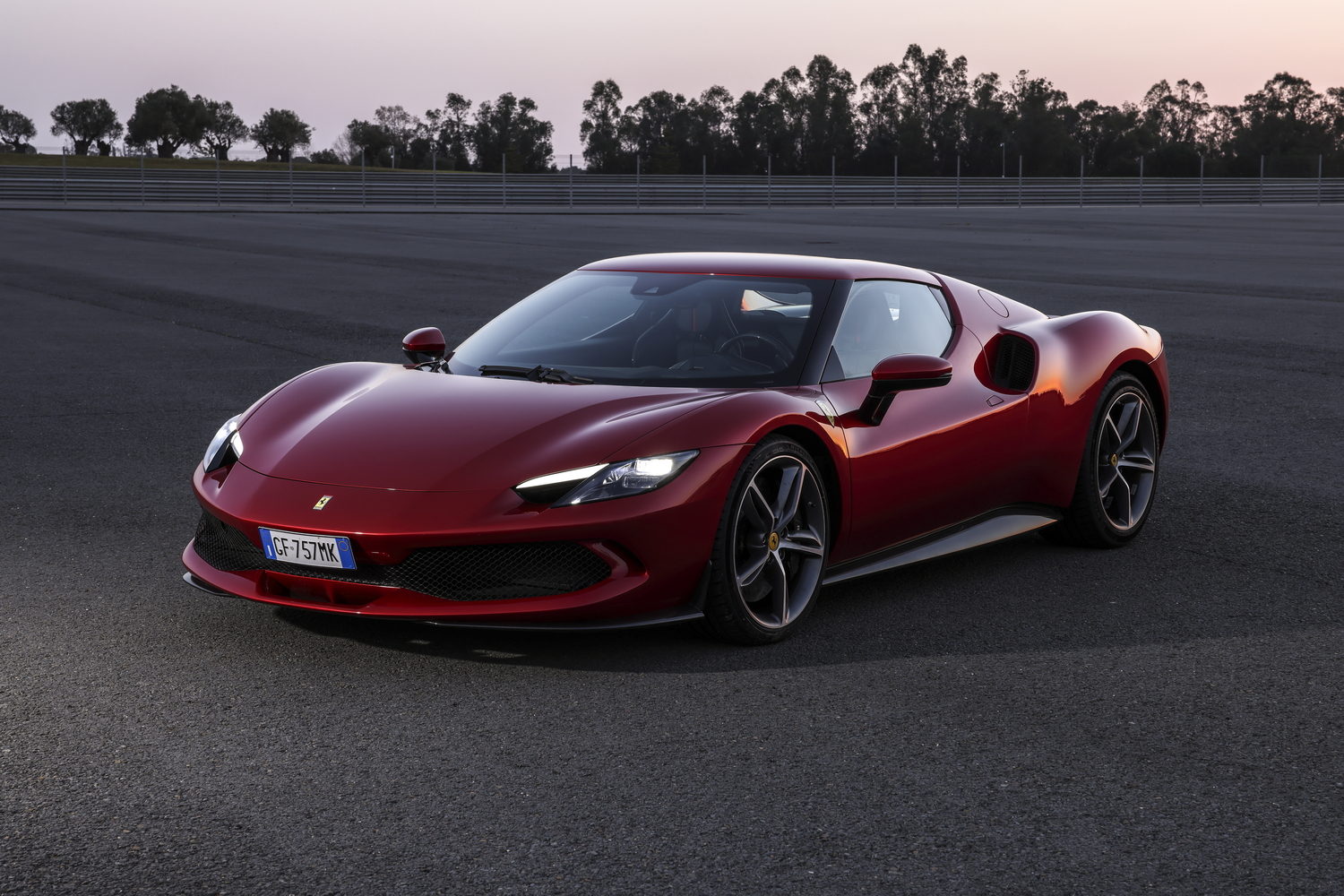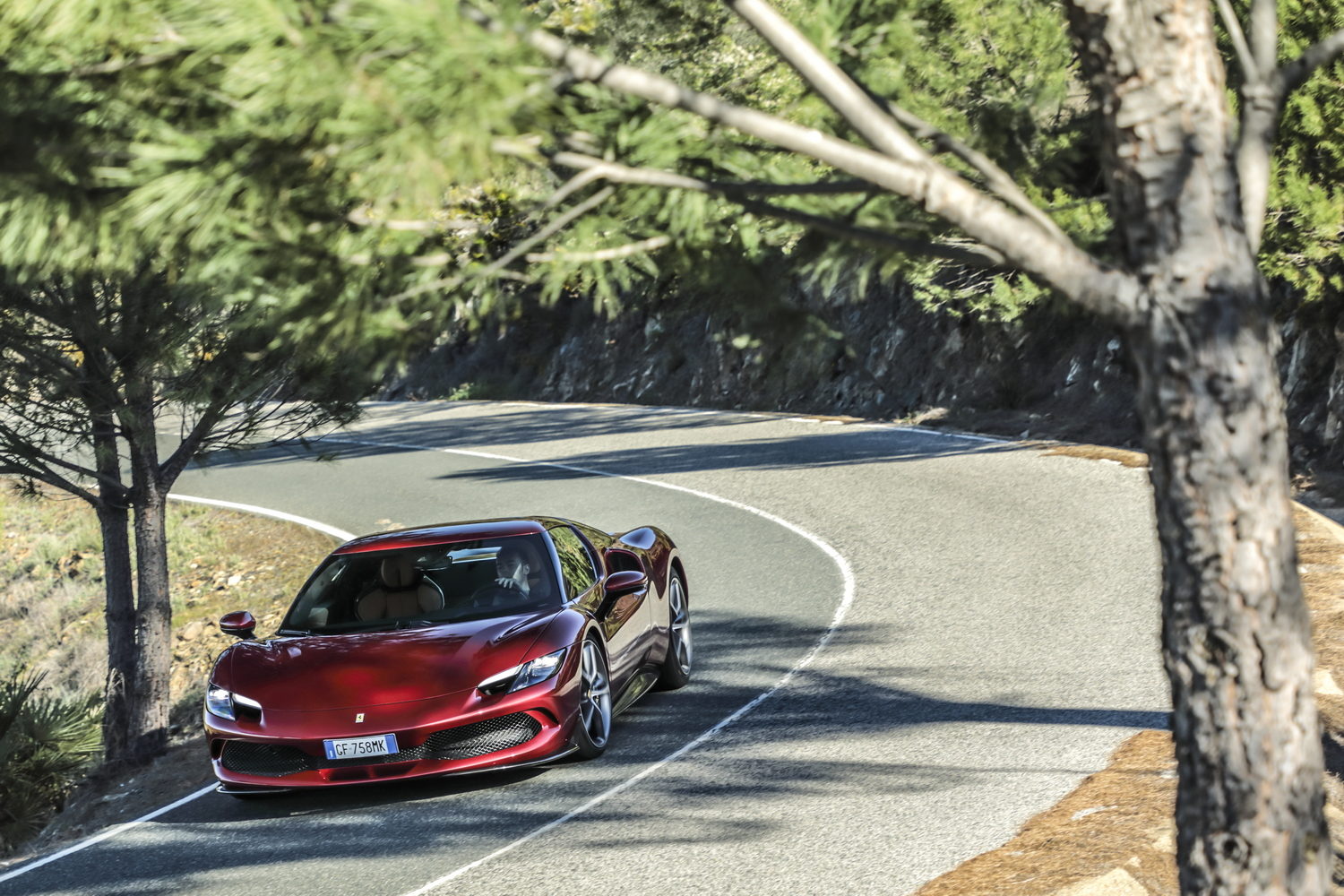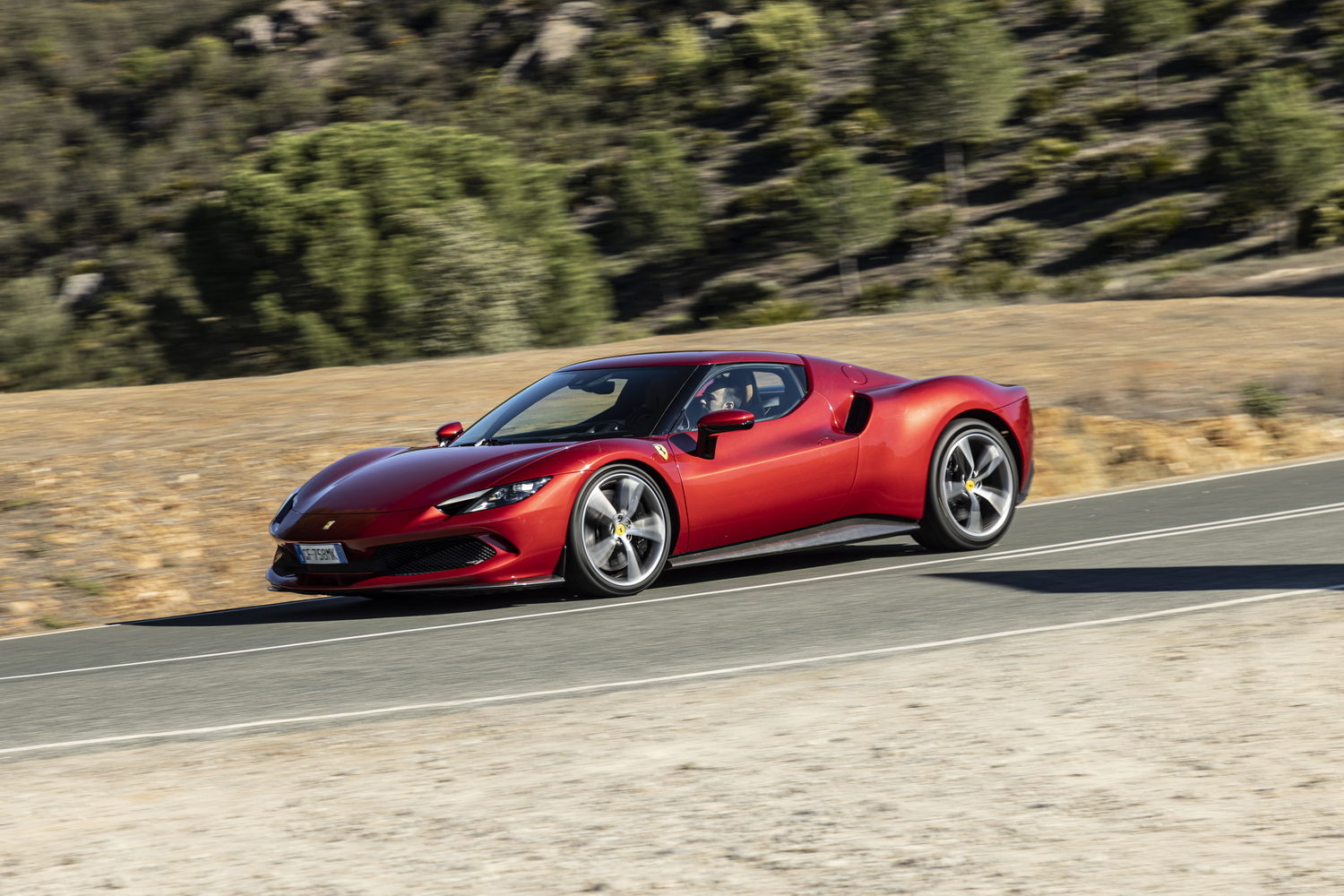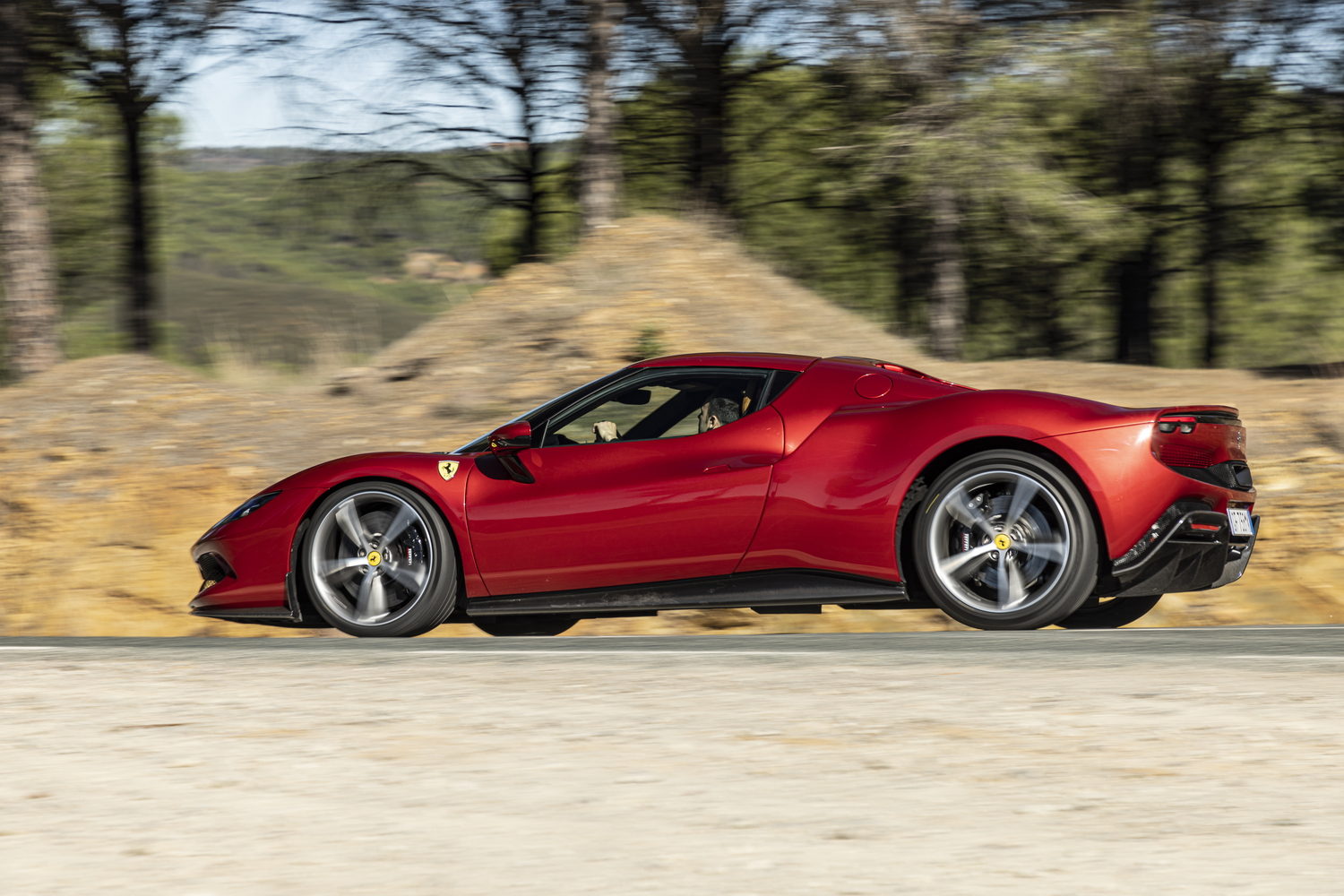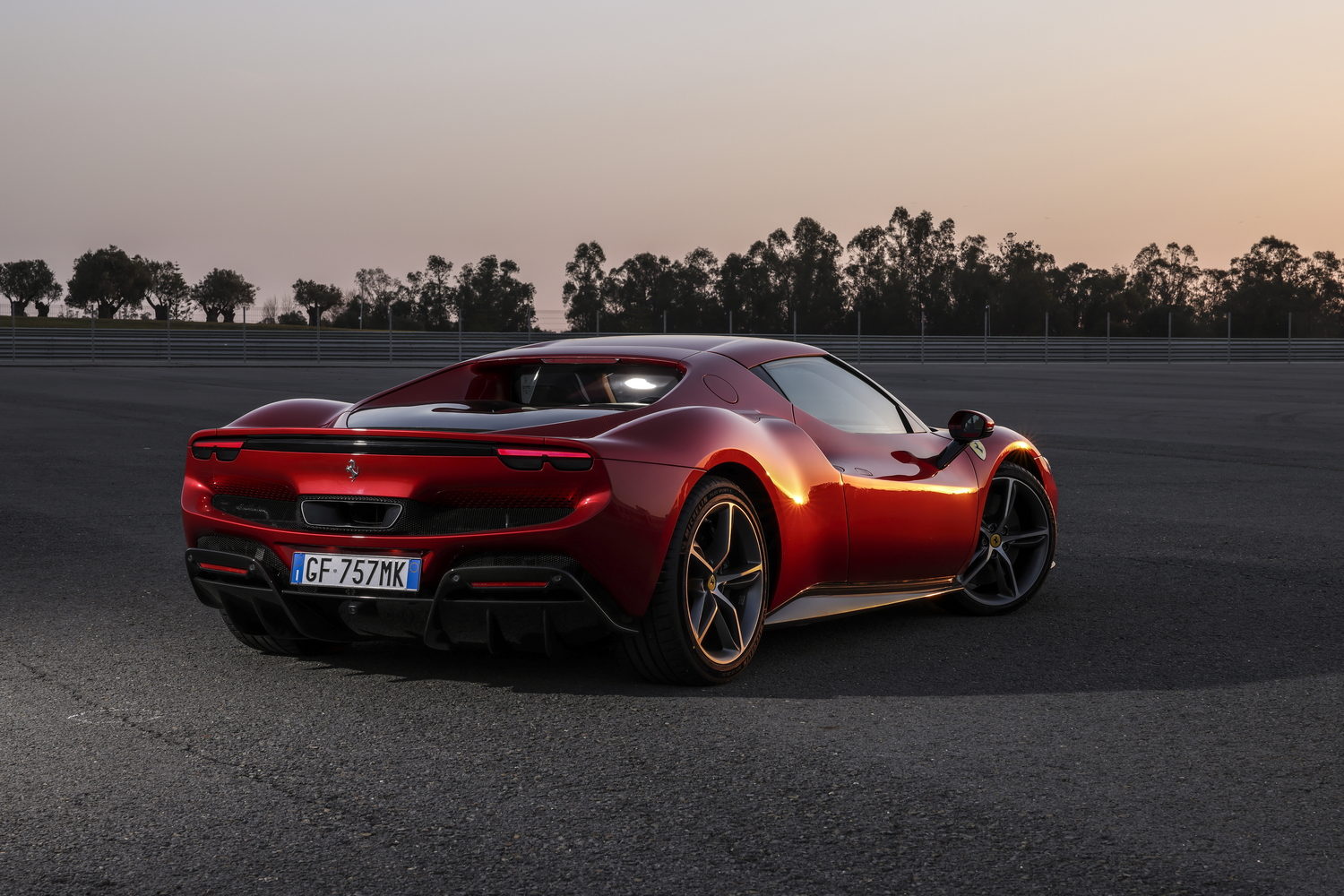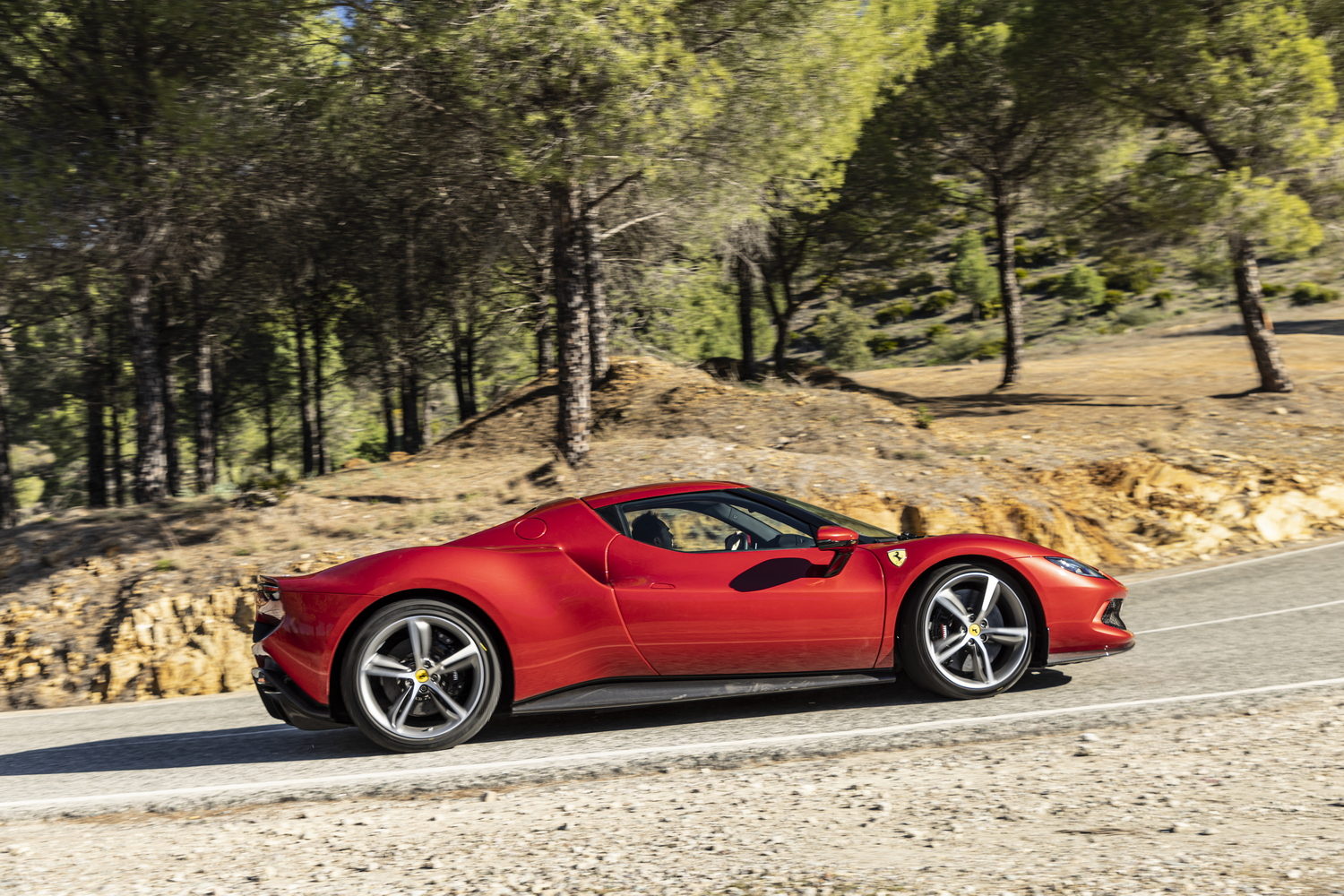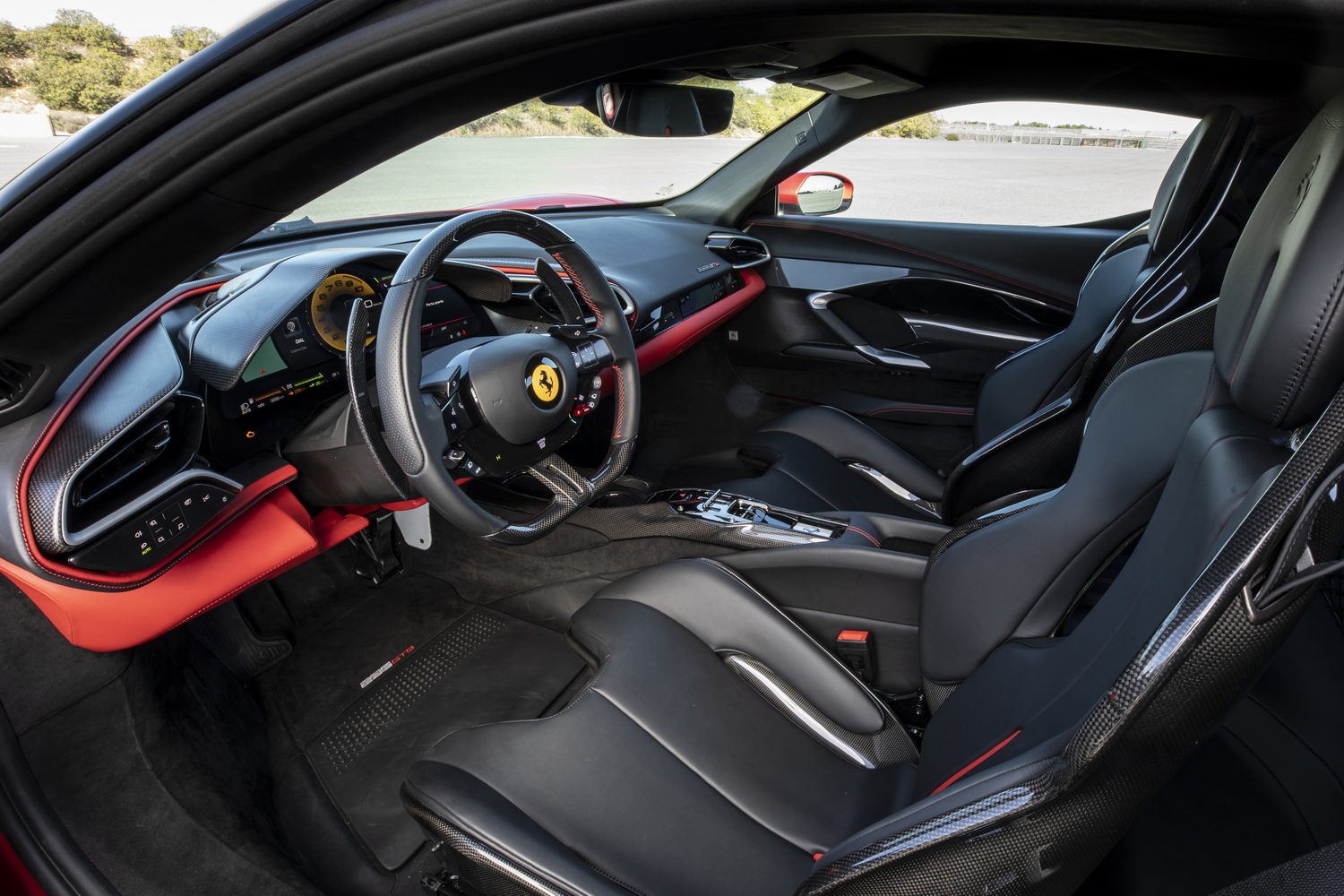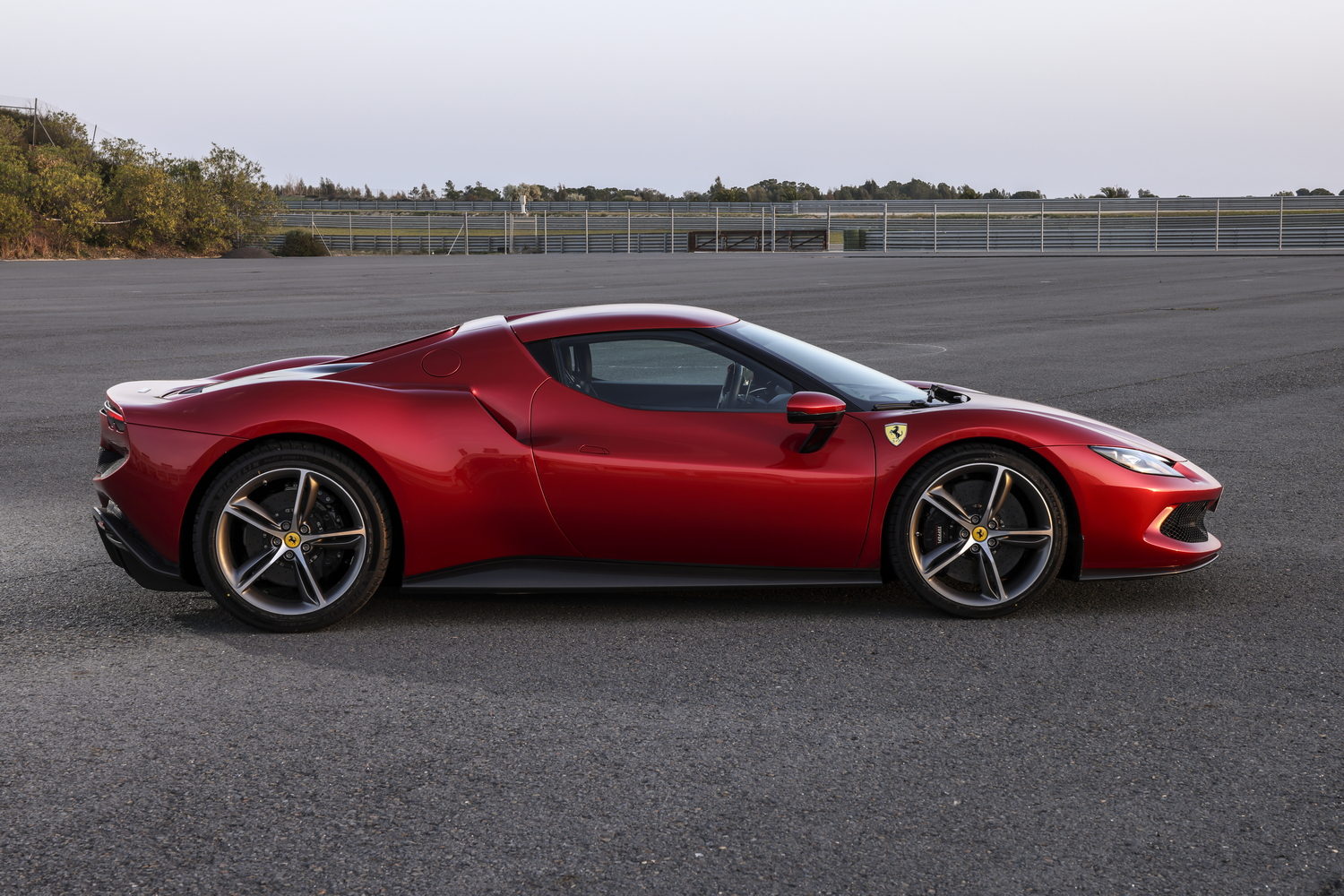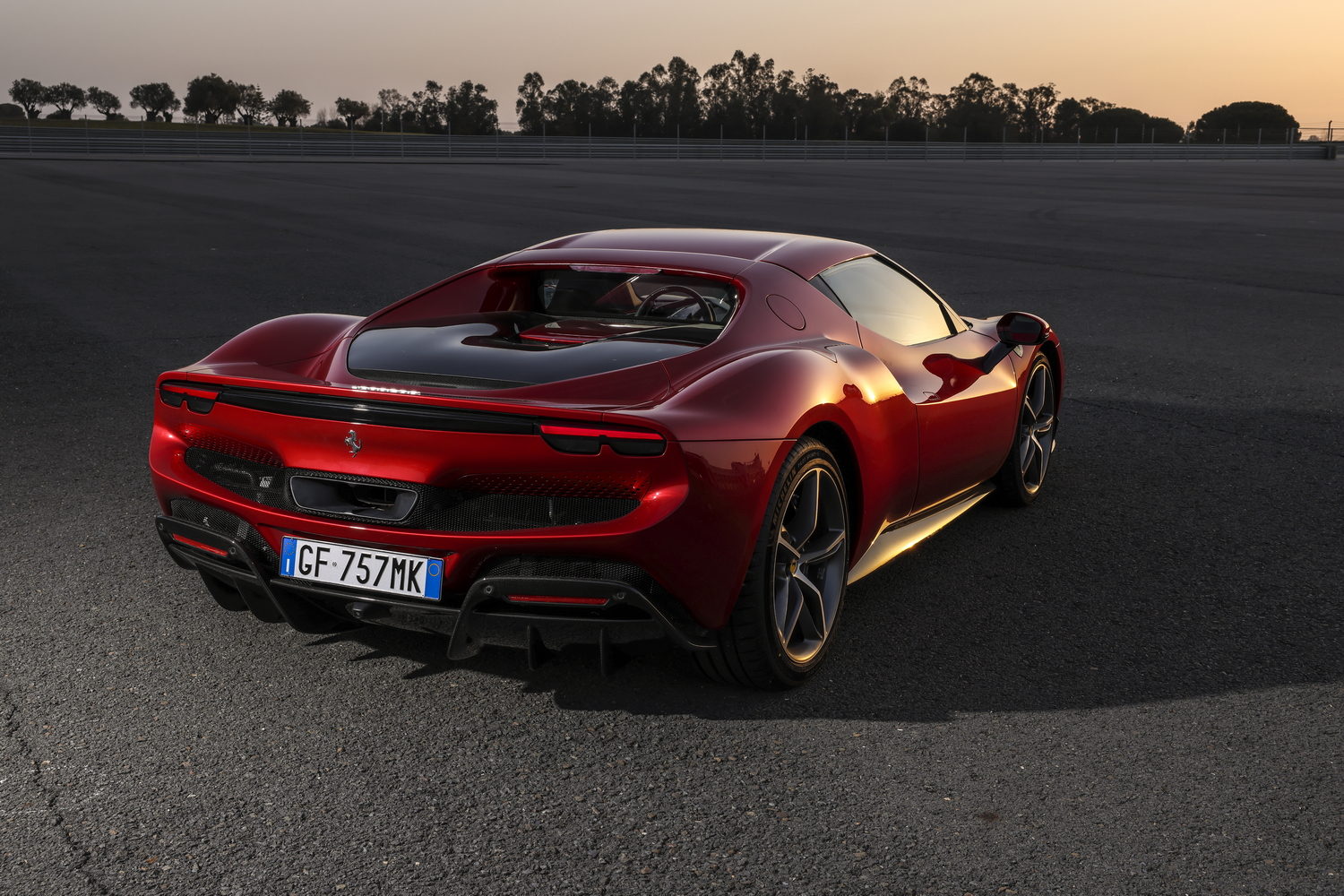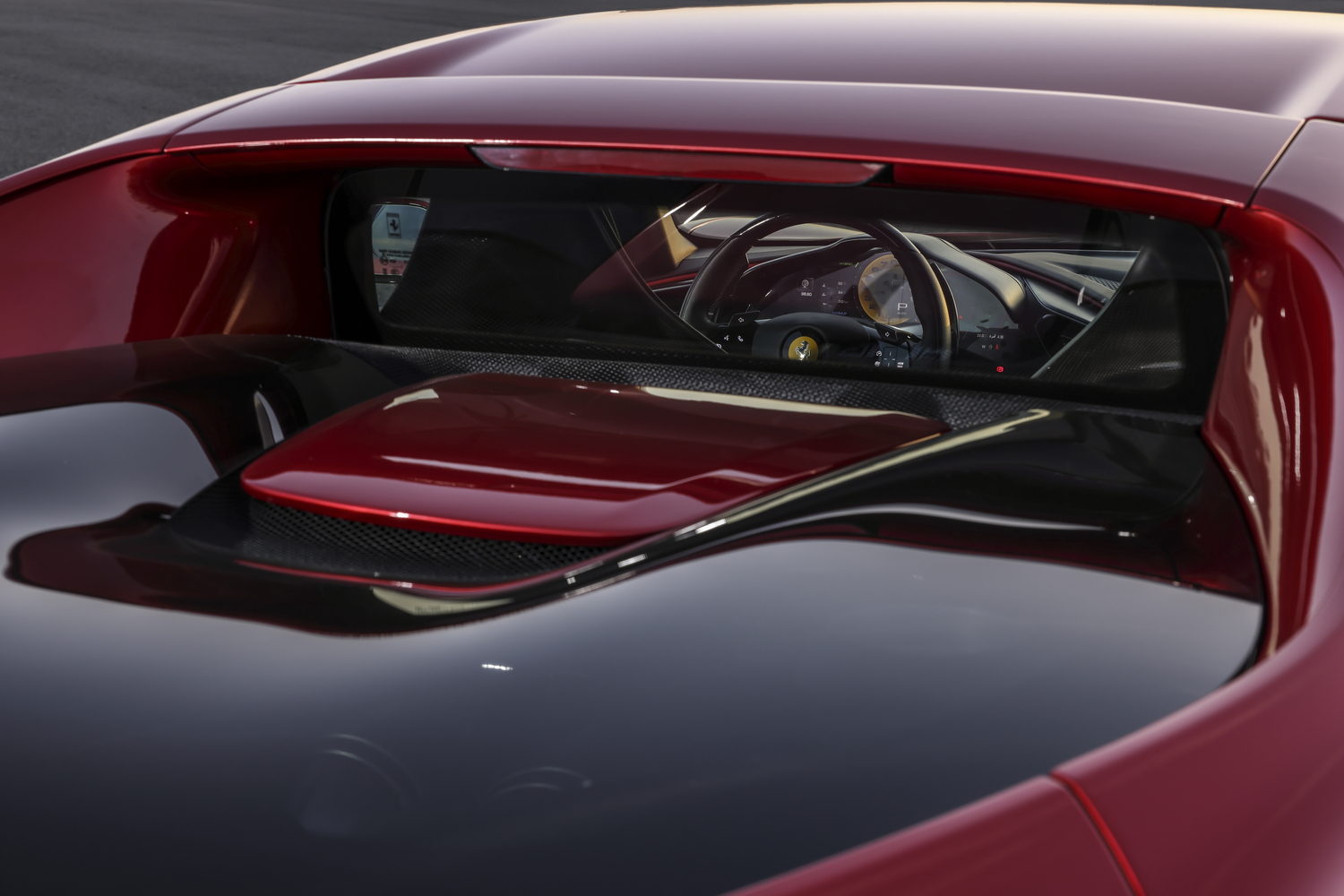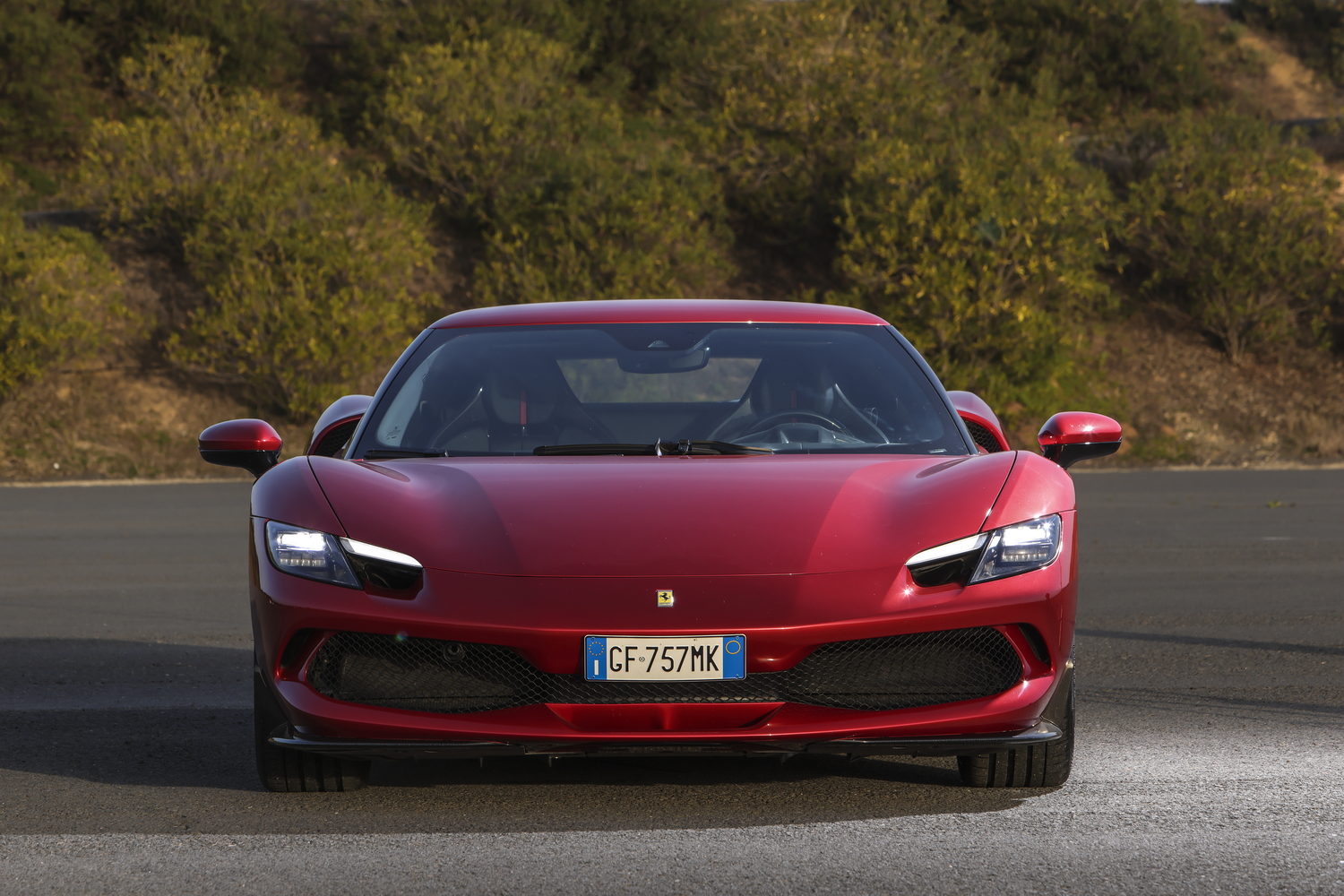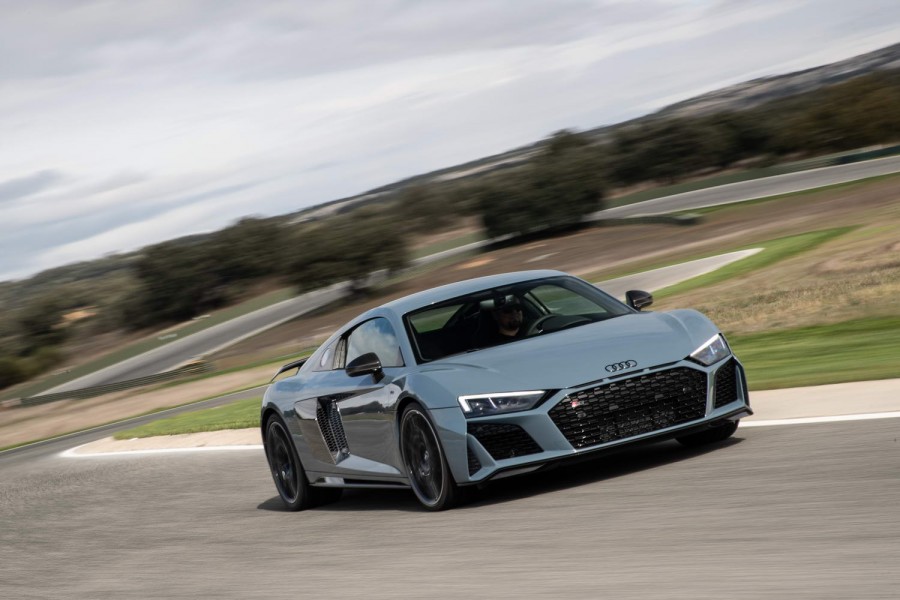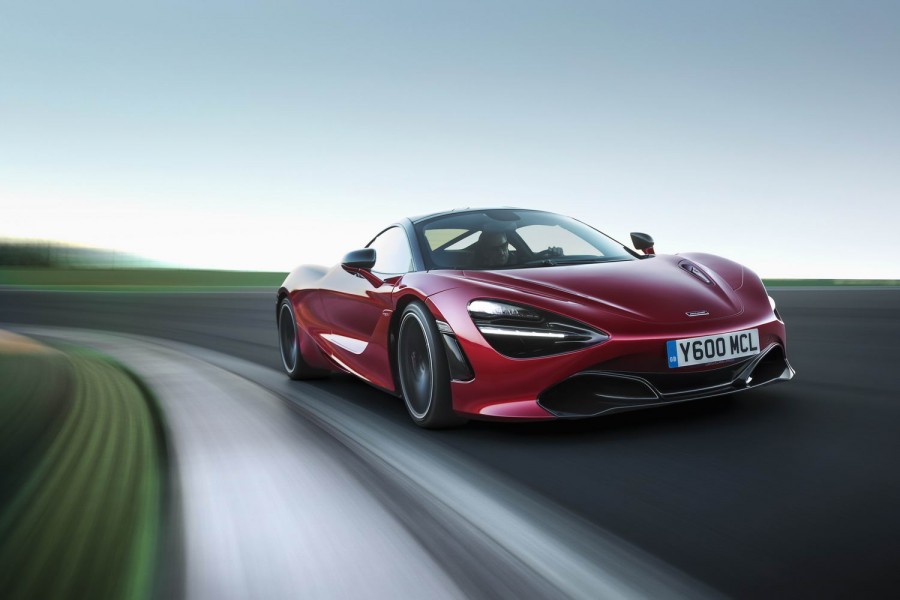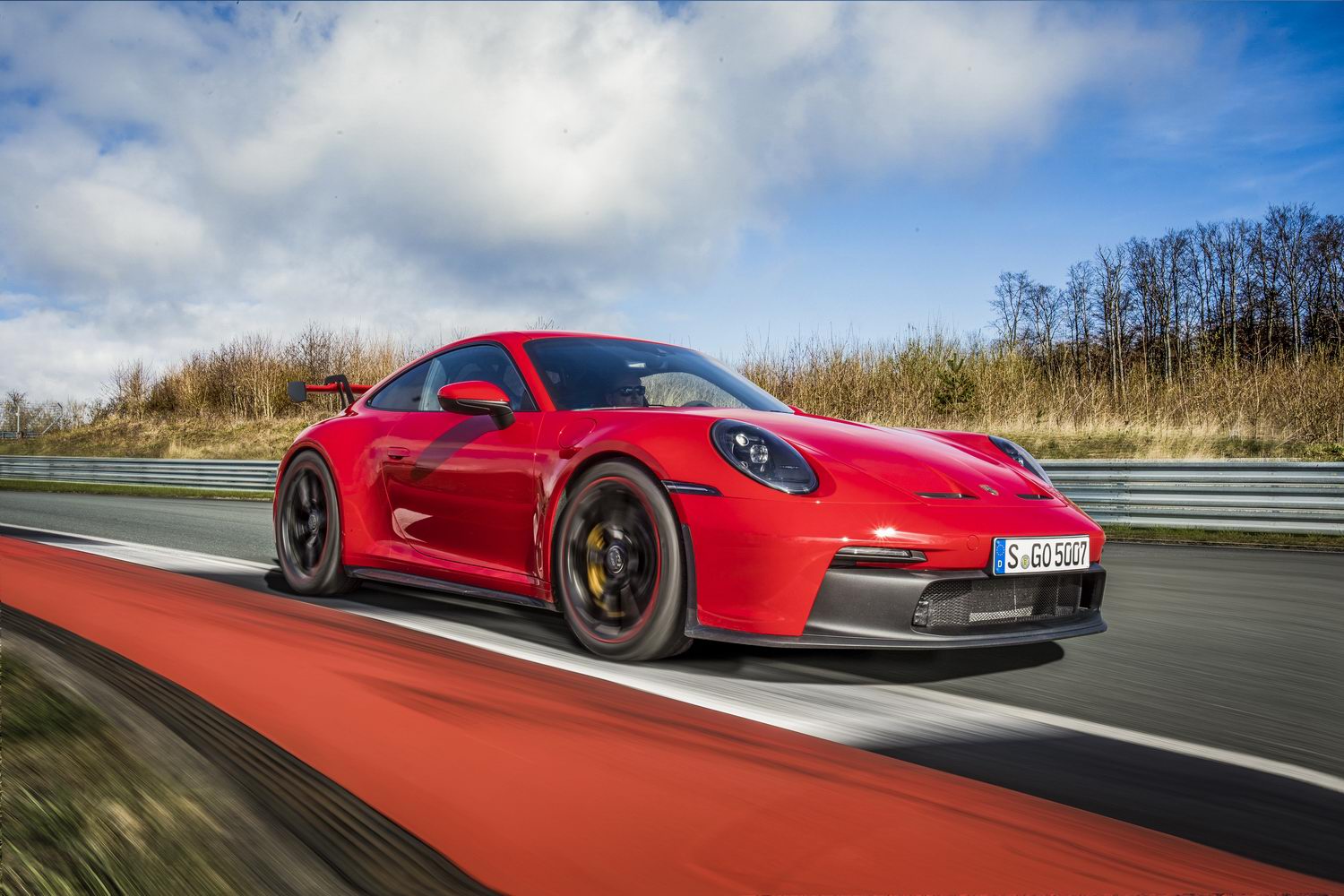In a world that's forever progressing towards electric vehicles, even the traditionalists at Ferrari are being forced to move with the times. Which is why Ferrari's newest supercar - the 296 GTB - has a V6 engine that's a whole litre (and two cylinders) smaller than the V8 that powers its stablemate, the F8 Tributo.
However, by making up for that shortfall with a plug-in hybrid system that produces a massive 830hp, it is still a direct rival for the McLaren 720S, Audi R8 and even the more powerful versions of the Porsche 911. But can a plug-in hybrid supercar, and indeed a V6 Ferrari, live up to the traditions of the Prancing Horse's most iconic mid-engine sports coupes?
In the metal
Supercars are often striking, regularly dramatic and sometimes beautiful, but few look as good as the Ferrari 296 GTB. With the engine positioned in the centre-rear of the car, just behind the seats, the shape is trademark Ferrari, with a low stance and chunky haunches. The details are no less beautiful, from the 'Kamm' tail that looks as though it has been scooped out of the metal and the slim taillights to the flush door handles and the simple, elegant alloy wheels.
But while the Ferrari is undeniably beautiful, many of its apparent design features serve a purpose. Those holes in the headlights, for example, are there to direct cooling air to the massive brakes, and the slot in the lower bumper is designed to funnel air under the car, allowing the underbody aerodynamics to suck the car into the asphalt. Even the rear part of the roof is designed to channel air in a specific way, creating an aerodynamic panel that cleans the airflow over that vertical rear window and down to the tail. The best bit is the retractable rear spoiler that pops out from between the taillights when required, pushing the rear wheels down into the road surface.
But while the 296 GTB's exterior merges function and form, the interior appears to be more settled in one camp. The cabin looks and feels brilliant, with a real sense of pedigree and intent that makes the car feel all the more special, but it's an ergonomic nightmare. There are loads of buttons on the steering wheel, including those for the indicators. The two little thumb switches are fine when the wheel is straight, but on roundabouts or at junctions where the wheel is turned upside down, the buttons are suddenly the wrong way around. It can demand a moment's thought.
More bothersome, however, are the other buttons, which aren't really buttons at all. Ferrari has almost entirely done away with conventional switchgear, preferring touch-sensitive 'haptic' controls. These can be found operating the air conditioning, the lighting and even on the steering wheel. So complete is the conversion that even the ignition button is touch-sensitive.
While these switches look good in front of you, they aren't always especially easy to use. Sluggish when you want a quick reaction and over-sensitive when you don't, they often require multiple taps before doing your bidding, or you find yourself wondering which button you pressed by accident. Still, they're better than the laptop-style touchpad that controls the digital instrument cluster in front of you. Awkward and fiddly, it's no match for the more intuitive Virtual Cockpit found in the Audi R8.
Which is a shame because the Ferrari's instrument display would otherwise be very good. It's a little fussy at times and the navigation display is a bit basic, but it has lots of customisation options and the screen resolution is great. Controls aside, it's easily a match for the hybrid analogue-and-digital screens in the Porsche 911.
The passenger display is a neat touch, too. In such a driver-orientated cabin, the passenger wouldn't usually have access to infotainment tech, but the Ferrari hands over some of the power. The small screen sits neatly in the dashboard trim, providing a simple but effective interface that provides access to vehicle data, as well as audio and navigation systems.
While Italian cars used to be derided for their perceived quality issues, the 296 GTB feels very solid. Admittedly, a lack of physical switchgear might help with that, but the quality is still excellent. All the materials are predictably classy, with soft leather and beautifully woven carbon-fibre trim, while they all slot together as beautifully as the components in that 2.9-litre V6 engine.
But that engine's positioning comes with drawbacks. Although slotting it in just behind the cockpit is ideal for balance, it's less helpful for practicality, ruling out any chance to make the 296 GTB a 2+2 and preventing the inclusion of any real luggage space behind the seats. Instead, there's a 201-litre luggage bay between the front wheels, and that's about your lot. It's a relatively generous space, but the 296 is still less practical than the Porsche 911 GT3, which has a smaller dedicated luggage compartment but also has the advantage of an enormous parcel shelf where the standard 911's rear seats would normally be.
Driving it
The 296 GTB's powertrain is nothing if not controversial. Where the F8 Tributo has a 3.9-litre V8, the 296 comes with a 2.9-litre V6. That makes it the first V6 Ferrari road car (no, the Dino doesn't count), while the addition of an electric motor between the engine and gearbox and a rechargeable 7.45kWh lithium-ion battery behind the seats makes it only the second plug-in hybrid Ferrari, after the SF90 Stradale. The difference is, where the SF90 drove the front wheels using electricity, the 296 sends all the power to the back.
In truth, the electric side of things is a bit uninspiring - particularly for those of an eco-friendly persuasion. Ferrari says the 296 GTB will only do 25km on a single charge, and that's exactly half the electric range of a VW Golf GTE. The official economy and emissions figures are not that impressive by hybrid standards, and even Porsche's E-Hybrids look cleaner on paper, but it's still much greener than most petrol-powered supercars.
Don't get us wrong, there are advantages to having a plug-in hybrid supercar, including the ability to leave home in the early hours without waking the neighbours and the novelty of driving a silent Ferrari, but it isn't especially environmentally minded. It does have an electric mode, which allows you to drive on the electric motor alone, and a hybrid setting that automatically chooses whichever motor it thinks will be most efficient at that point, but neither is the best representation of the 296 GTB's talents.
Instead, the performance mode is the one you'll want to use most of the time, combining both motors at once to provide more power and the stunning V6 soundtrack. Ferrari calls it the Little V12, which is probably pushing it a bit, but it's certainly a roaring, howling engine that doesn't miss the extra litre of displacement or the extra two cylinders of the F8's V8.
There's certainly no shortfall in performance. Where the F8's 3.9-litre engine produces 720hp, the 296 GTB's 2.9-litre engine churns out 663hp. But the electric motor adds an extra 167hp to that, giving the 296 a total of 830hp - 110hp more than the F8. As a result, 0-100km/h takes 2.9 seconds and the top speed is more than 330km/h. Whichever way you cut it, the 296 is mighty fast.
But it isn't just a question of straight-line speed. Ferrari says this car was built to corner well, allowing drivers to "attack" the bends with late braking and aggressive cornering speeds. If that was the goal, Ferrari has arrowed the 296 GTB straight into the top corner. The brake-by-wire system means there's no mechanical link between the pedal and the callipers, but there's even more stopping power and a surprisingly natural feel. The same is true of the electrically assisted steering, which is quite light but beautifully judged and also provides a good amount of feedback.
That gives you immense confidence in the car's abilities, and the 296 more than lives up to expectations. As well as a selection of hybrid modes, the car also has some chassis settings that effectively tune the car's suspension and electronic aids to suit the driver's requirements. There's a wet mode for slippery conditions, but the rest are all much more sport-orientated. Rotating the manettino dial around to the right allows for increasing amounts of slip, until the final setting basically whisks all the driver aids away and leaves you to it.
It's a setting that's only really worth using on a track, but then that's where the 296 GTB comes alive. It's more or less impossible to explore this car's capability on the road - at least not legally - because it's just so well sorted. Even mistreating it, stamping on the brakes and throwing it into corners at breakneck speed, won't lure it into serious misbehaviour. The grip from its purpose-built Michelin tyres is immense, and the car just swallows more and more punishment without complaint. Of course, judicious use of the accelerator as you leave a corner will result in a slide, but even then, it's easy to feel and manage. The car is fast but docile with it, allowing you to adjust it in the middle of corners by modulating the throttle. It handles beautifully.
And it rides well, too. Our Spanish test route wasn't especially lumpy, it's true, but the 296 GTB's suspension is supple and forgiving. It even has a bumpy road mode, which is accessed by pressing the manettino switch on the wheel. That softens the suspension even more, allowing choppier surfaces to be tackled in relative comfort. Naturally, it can't iron out the bumps altogether, but the ride is more than tolerable. We'll have to try it on more representative roads to be sure, but this could well be one of the most comfortable supercars out there.
What you get for your money
Irish buyers that want a 296 GTB will have to visit the Charles Hurst dealership in Belfast. That's fine, but don't expect it to be a cheap exercise, with British customers paying just over £240,000 for a basic 296. To that, you must add VRT if you want to register it south of the border, though with a relatively low CO2 emissions figure, the VRT is at least pegged to 21 per cent - most supercars are in the 37 per cent bracket.
The standard car comes with everything you need, but the bits you want, including the little shields on the front wings, are an optional extra. Don't bet on spending much less than €400,000.
Summary
The 296 GTB's plug-in hybrid system is a bit of a red herring; a distraction that suggests this car is something more complicated than it really is. While a little silent, zero-emission motoring comes in handy on occasion, the real benefit of the Ferrari plug-in hybrid system is the way in which it supplements that fantastic V6 engine. This is still very much a supercar, but it's more than that. It's one of the absolute best supercars on the market.

